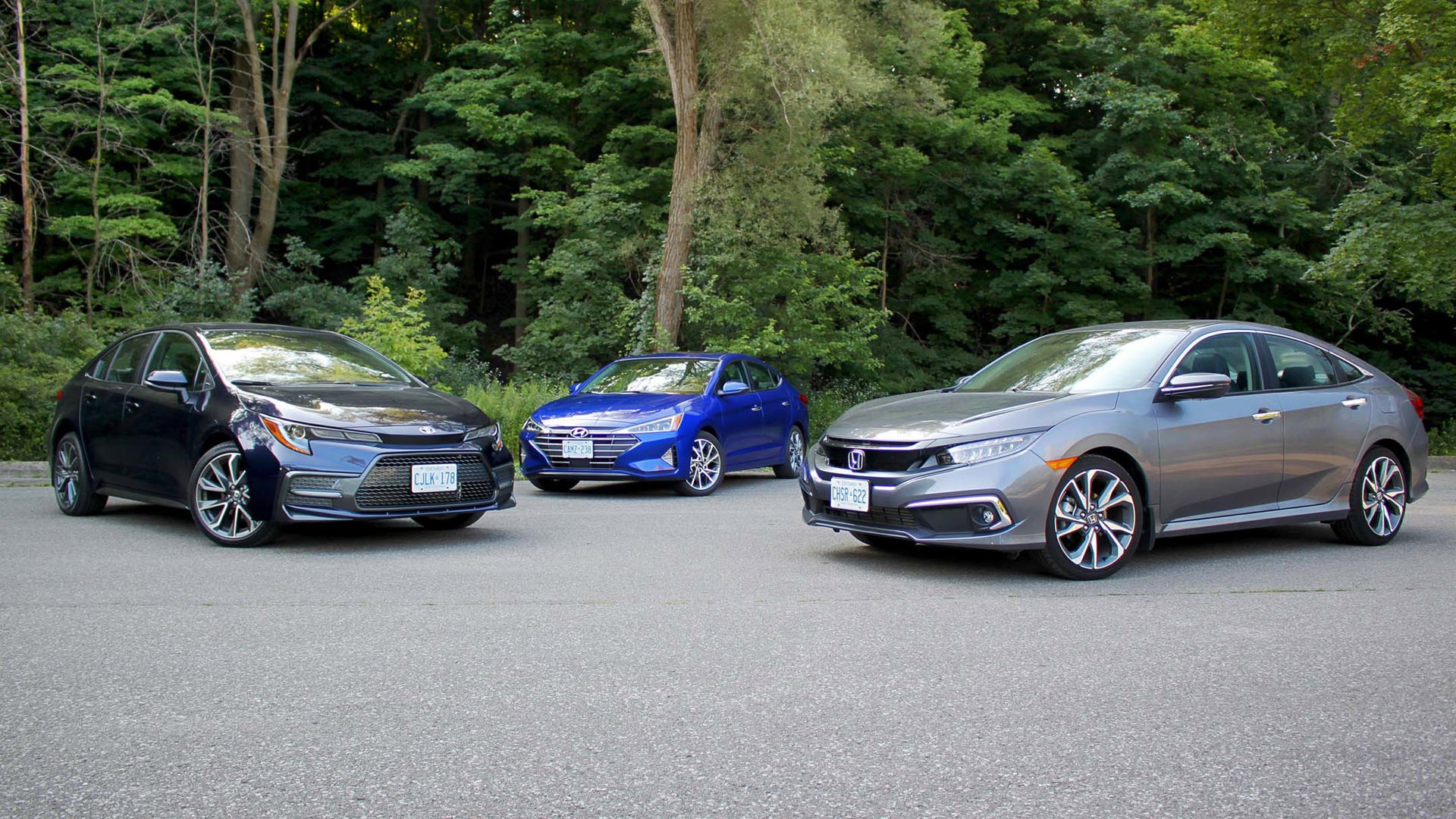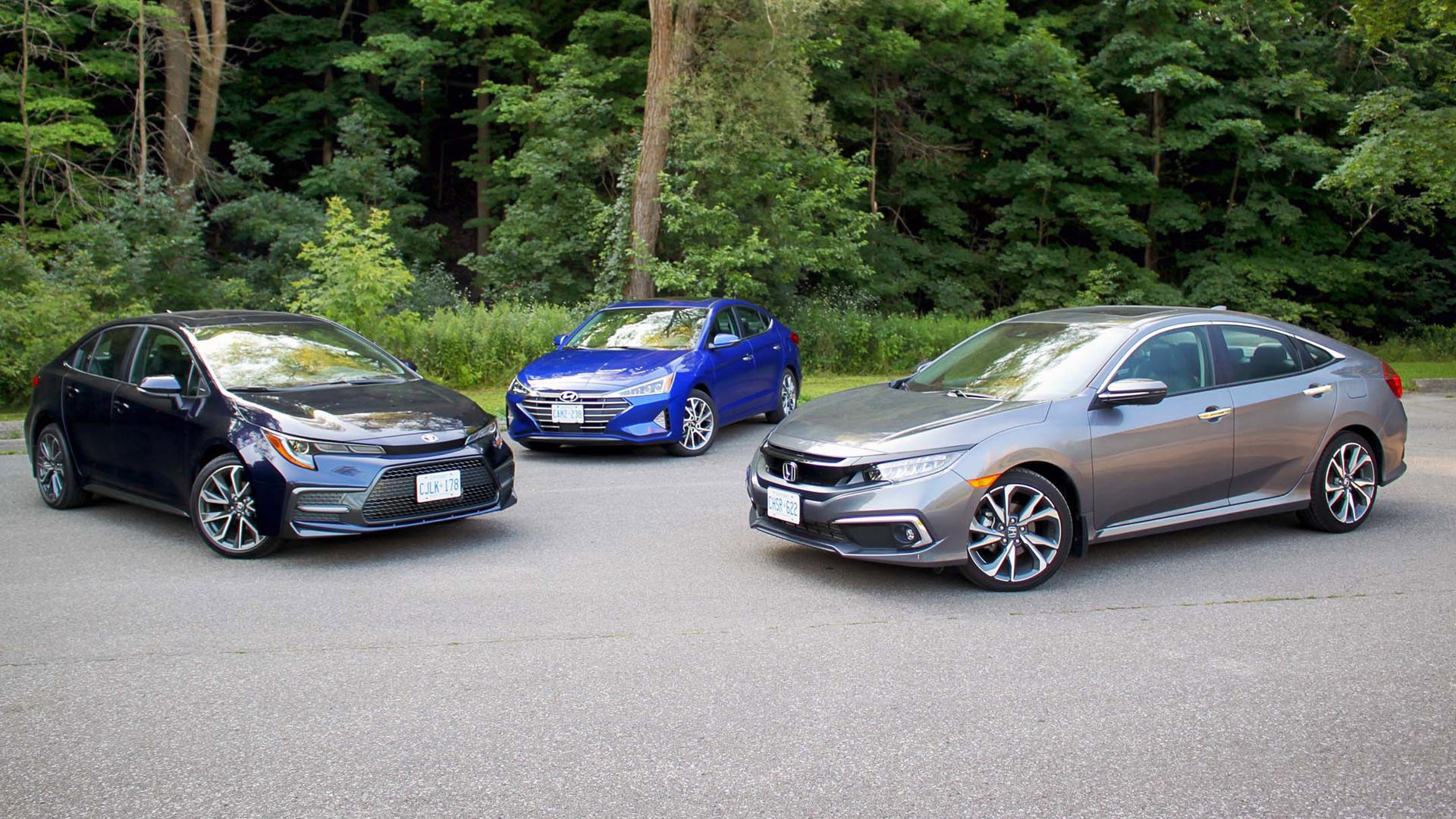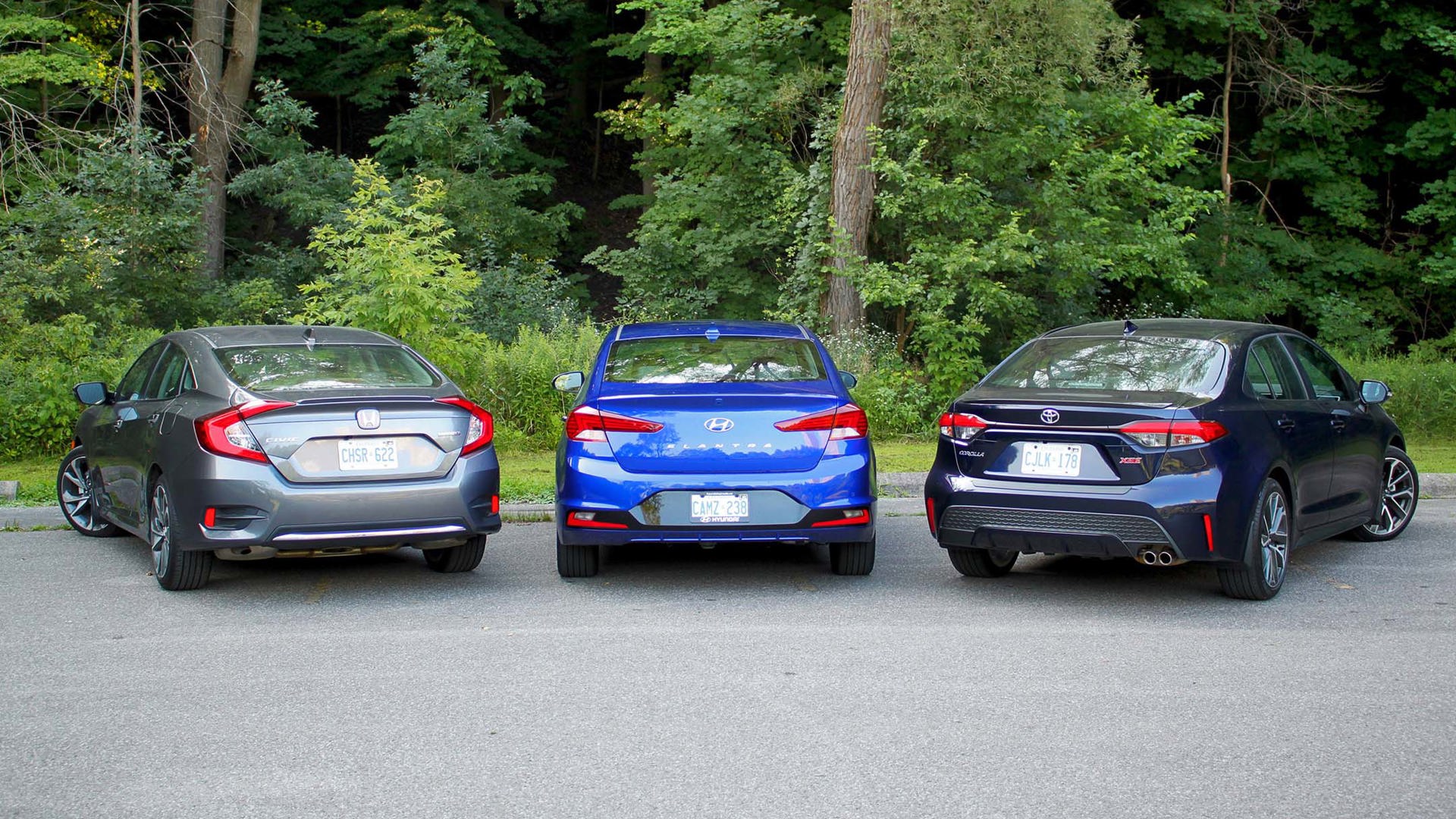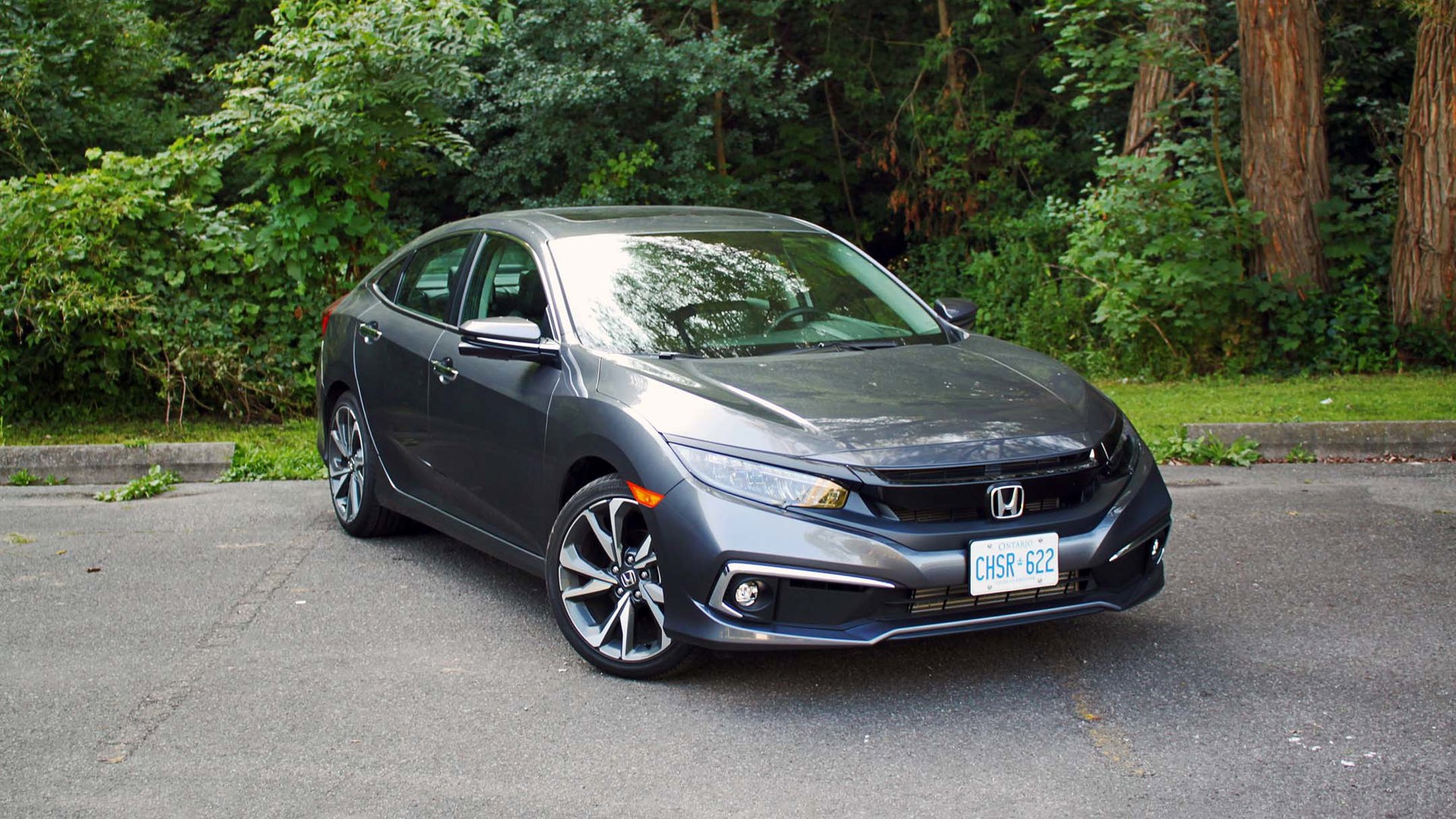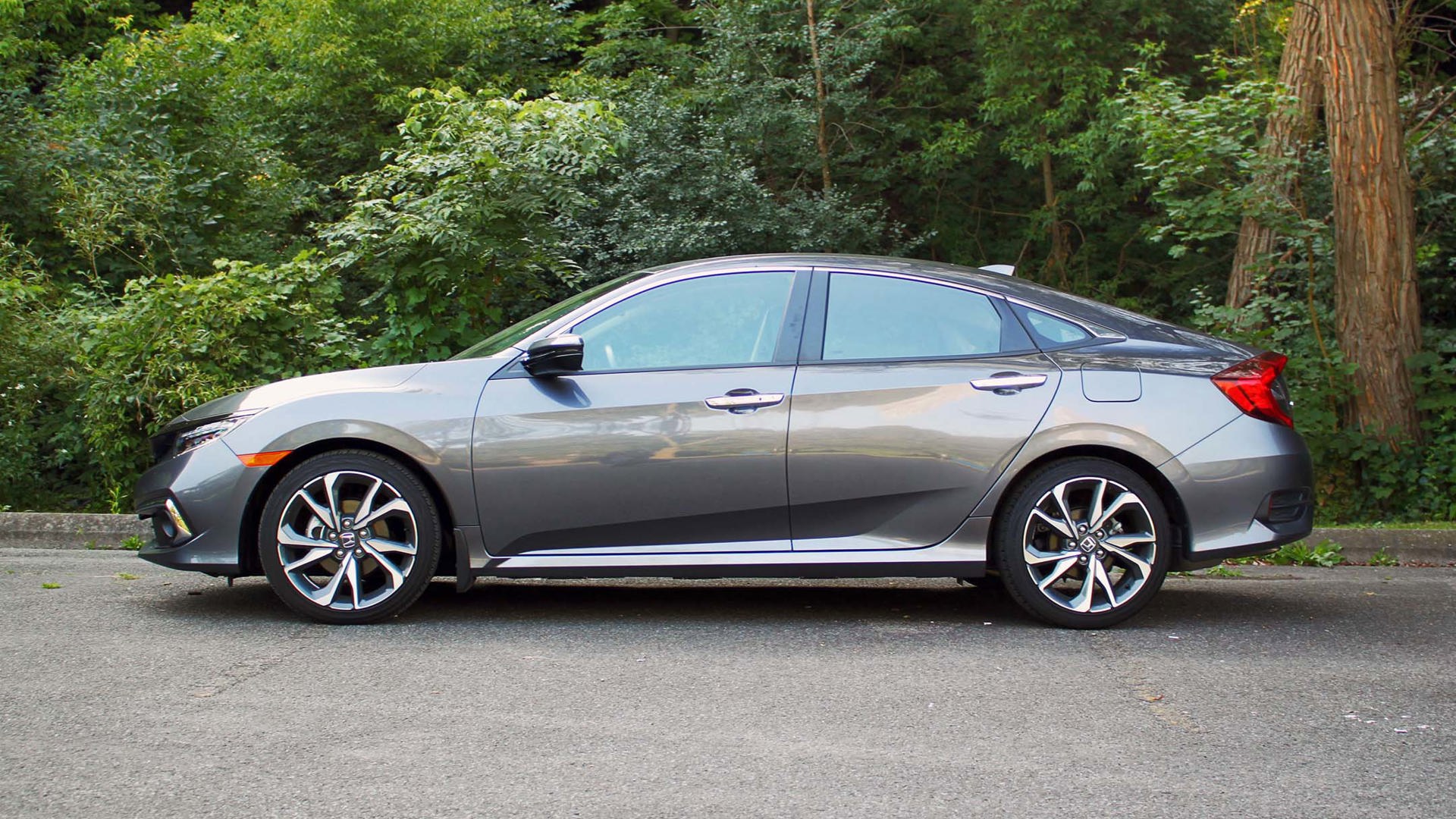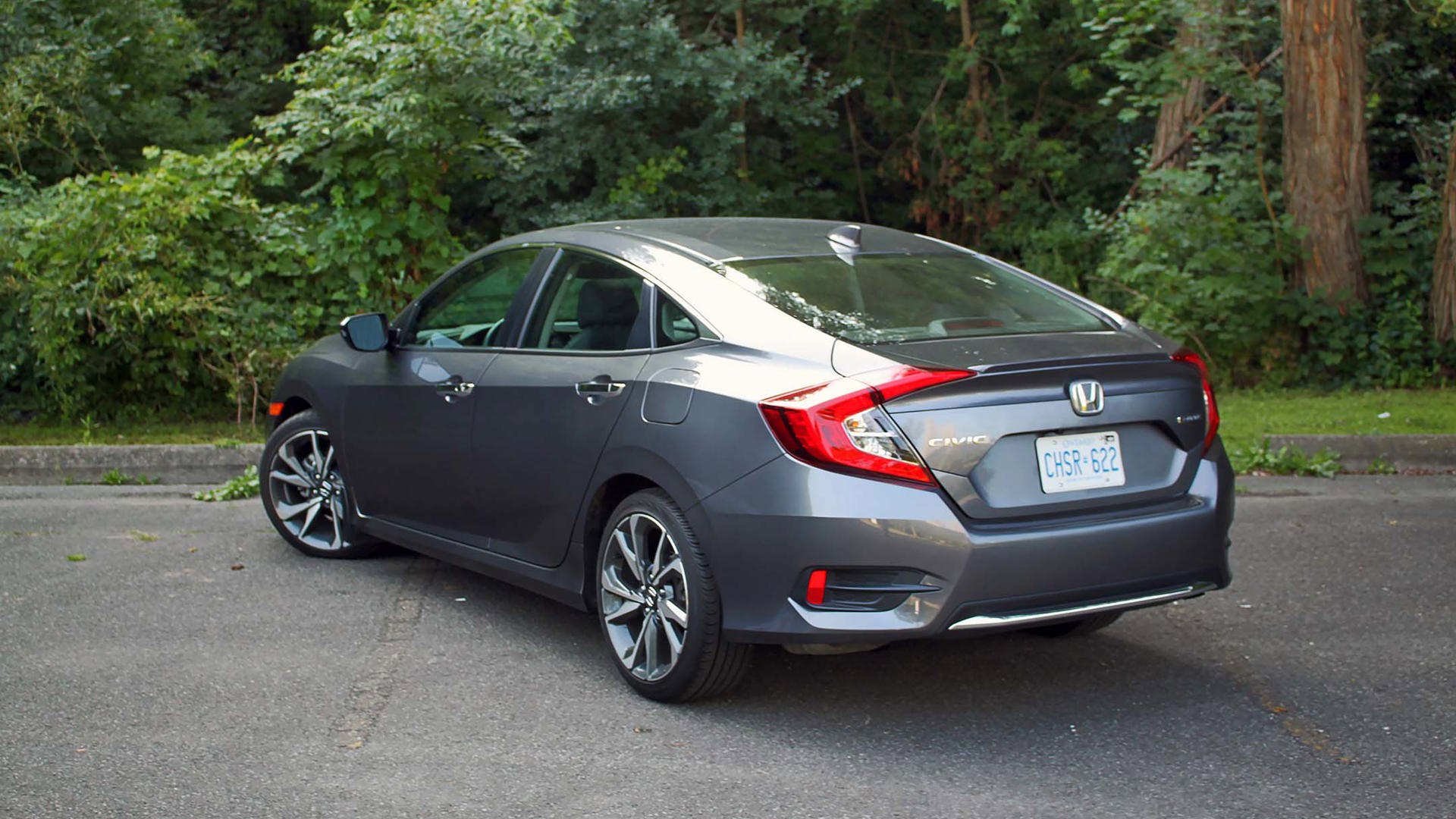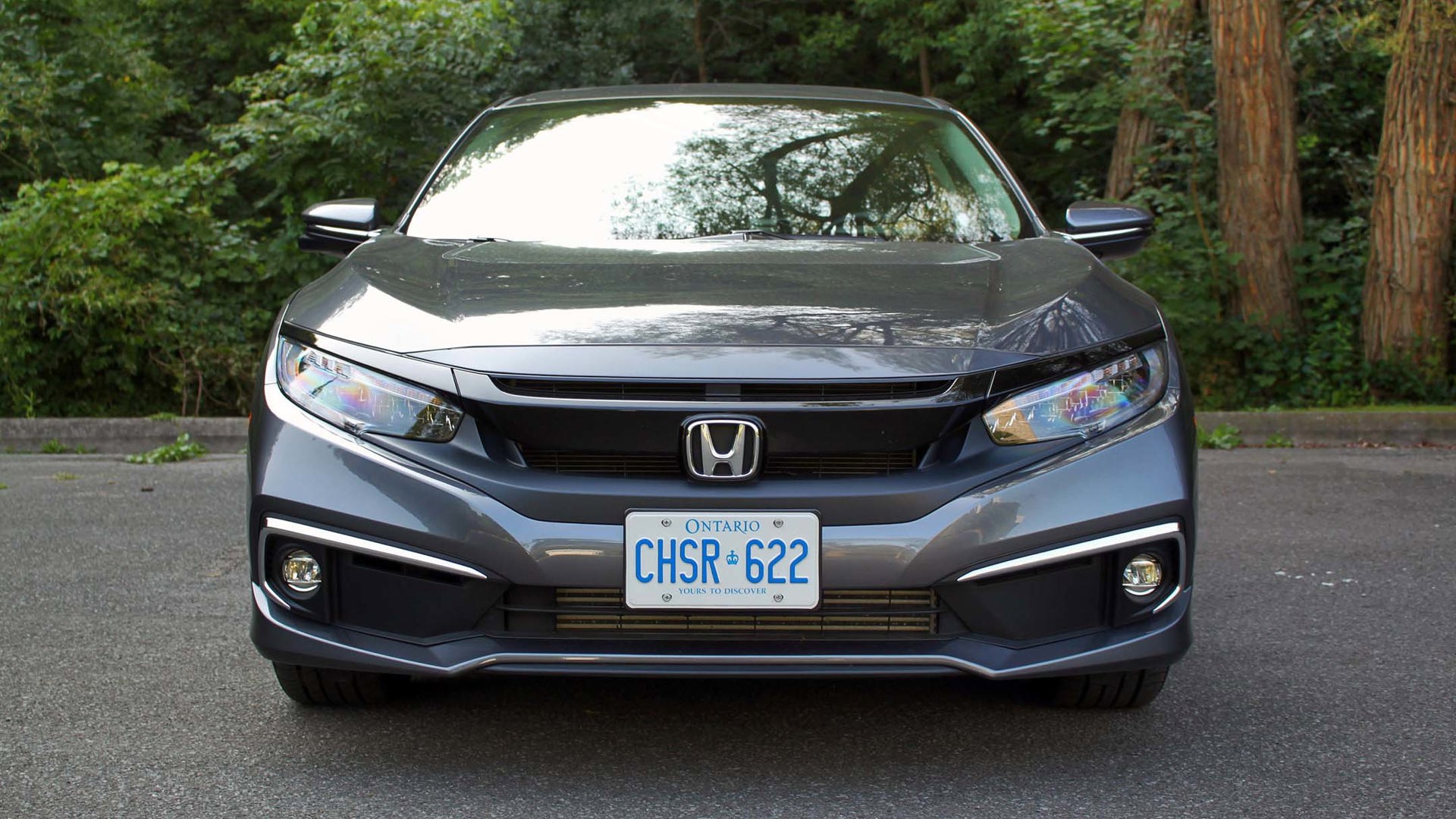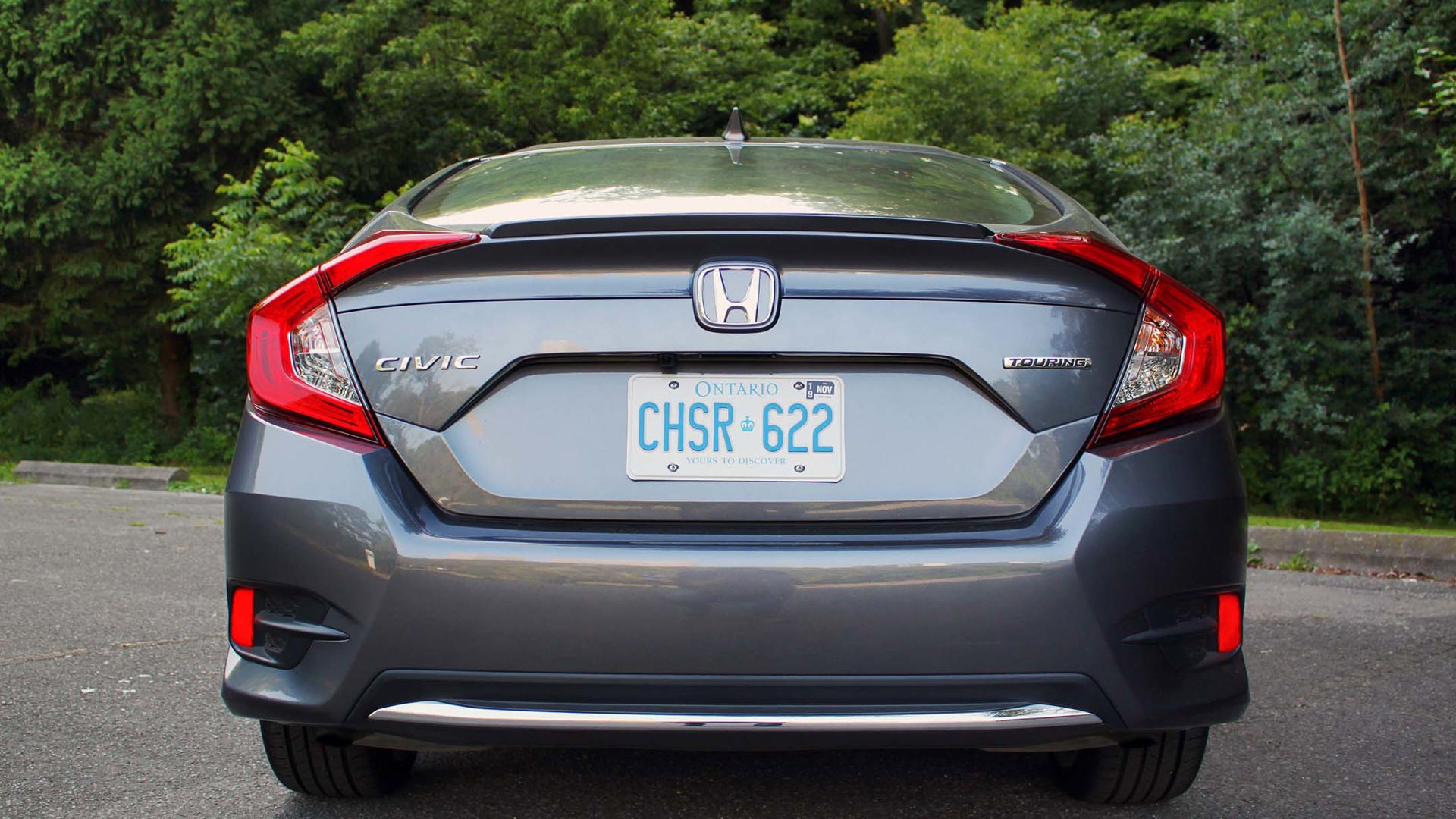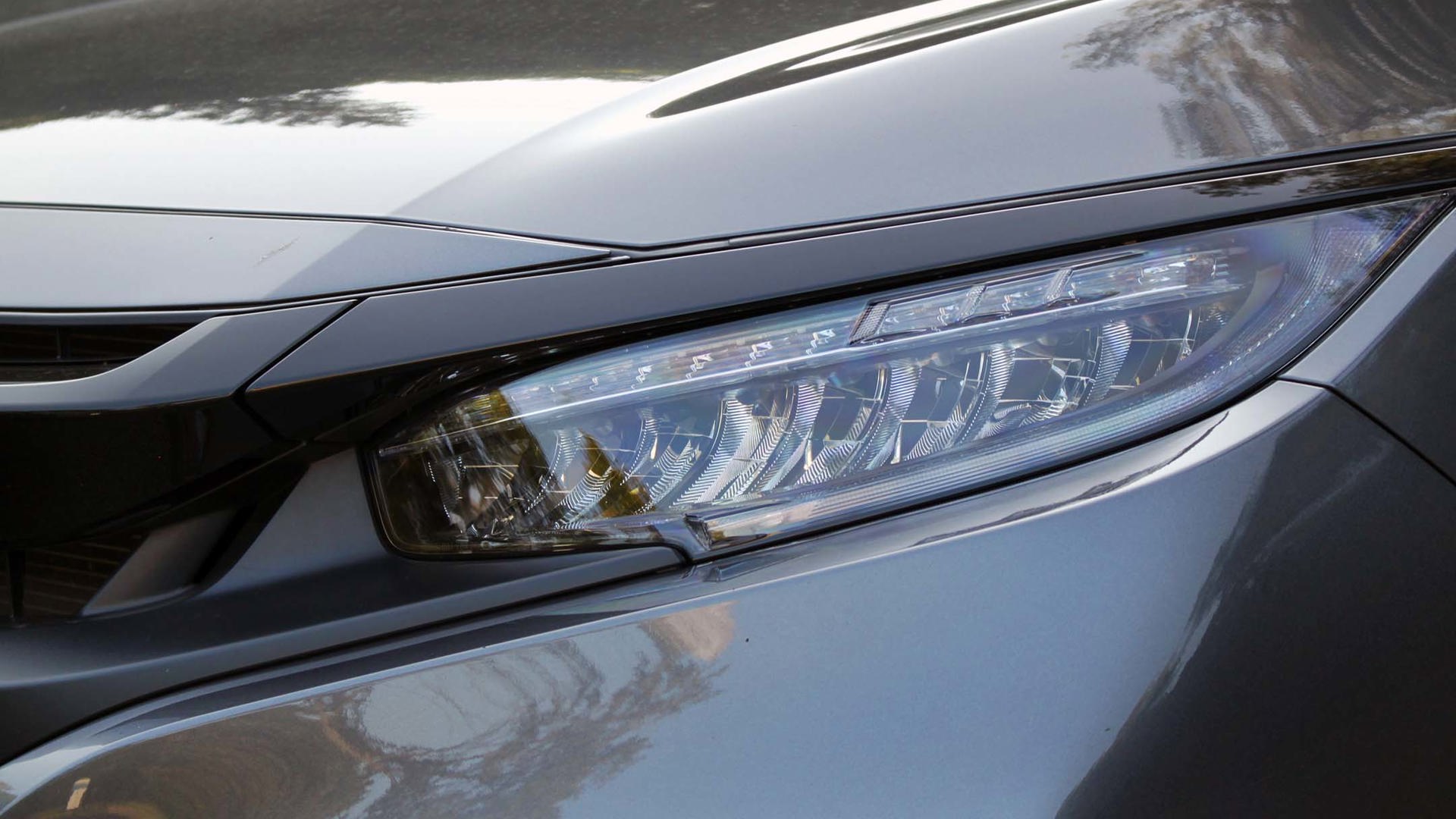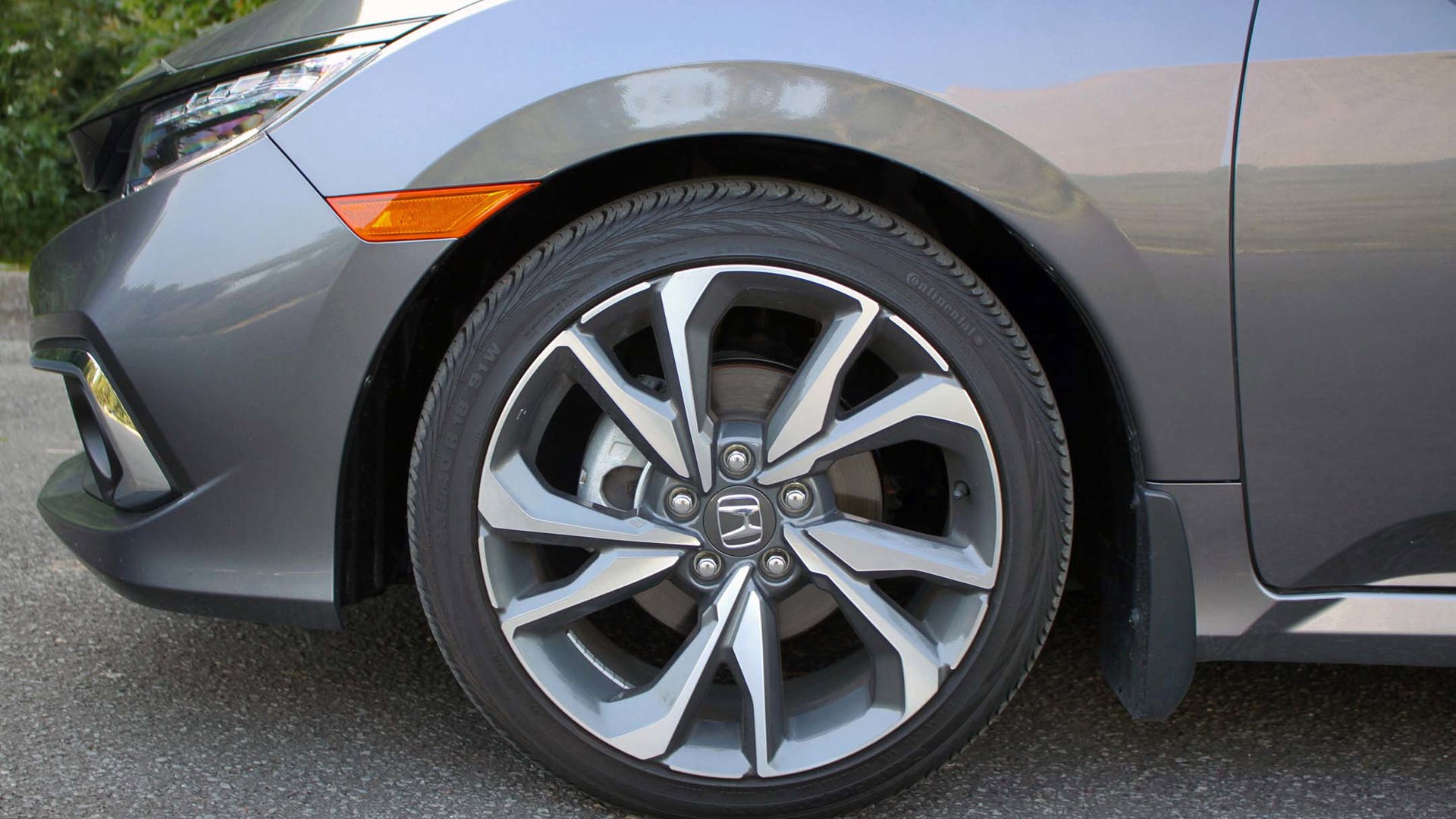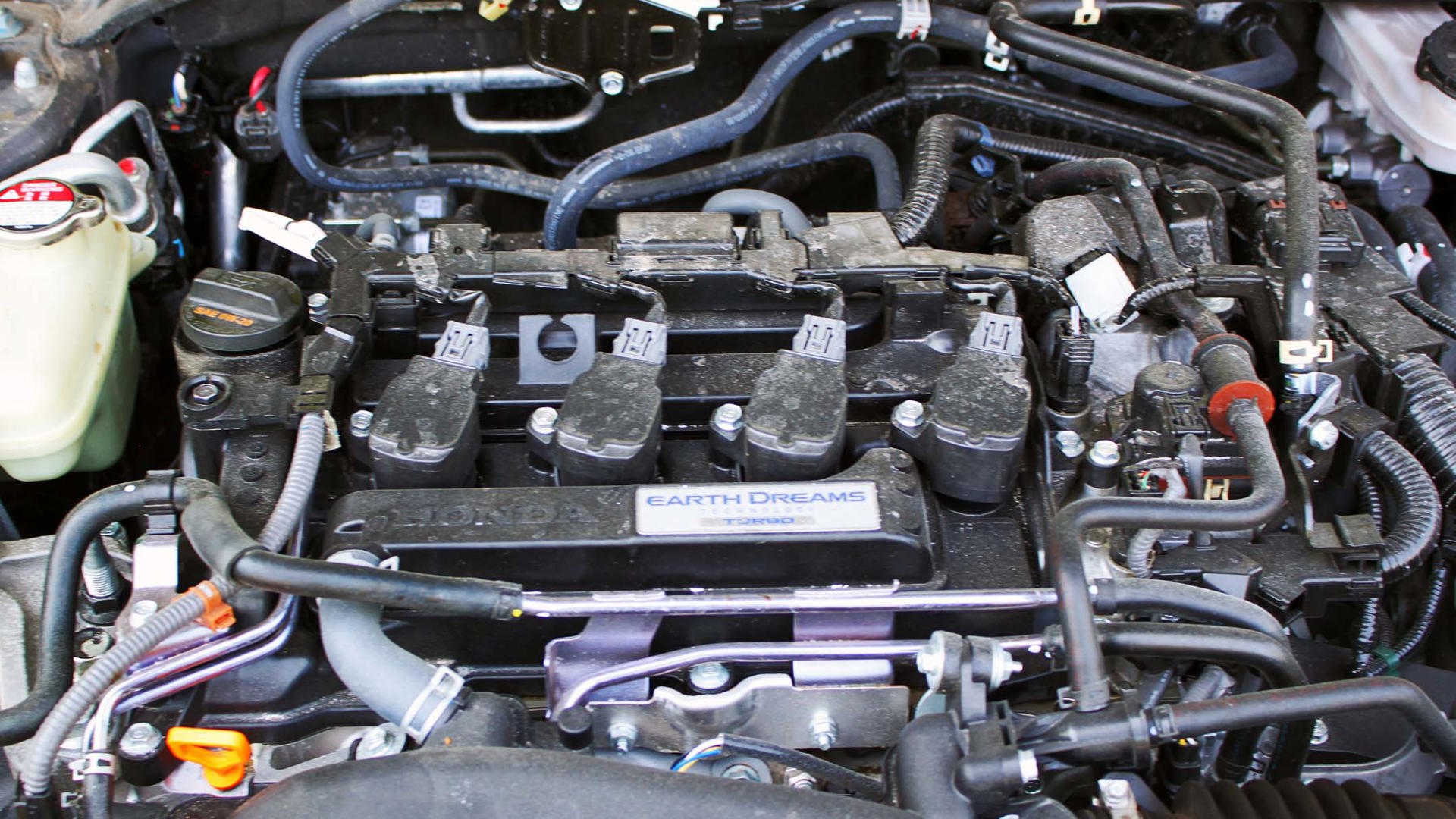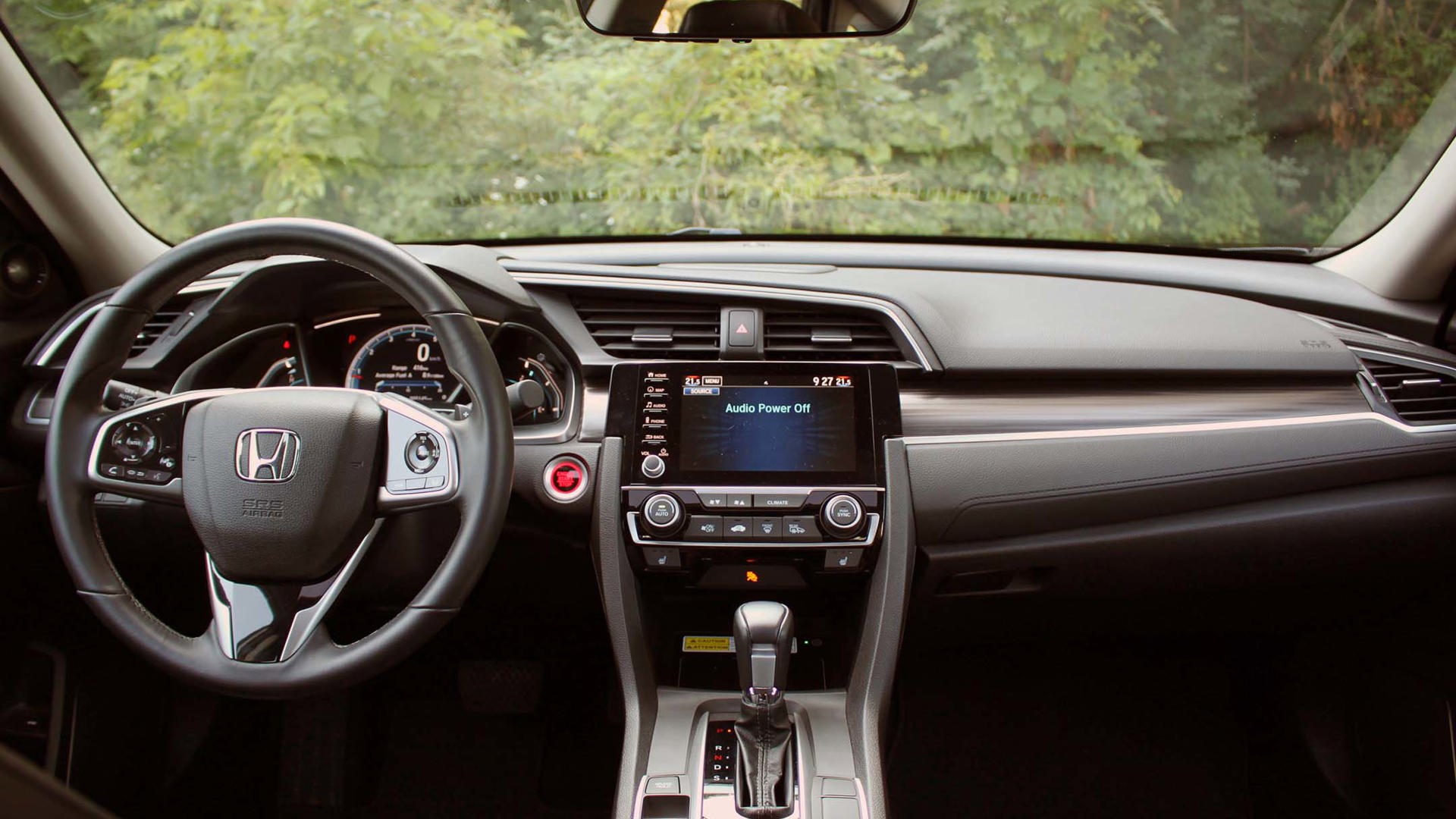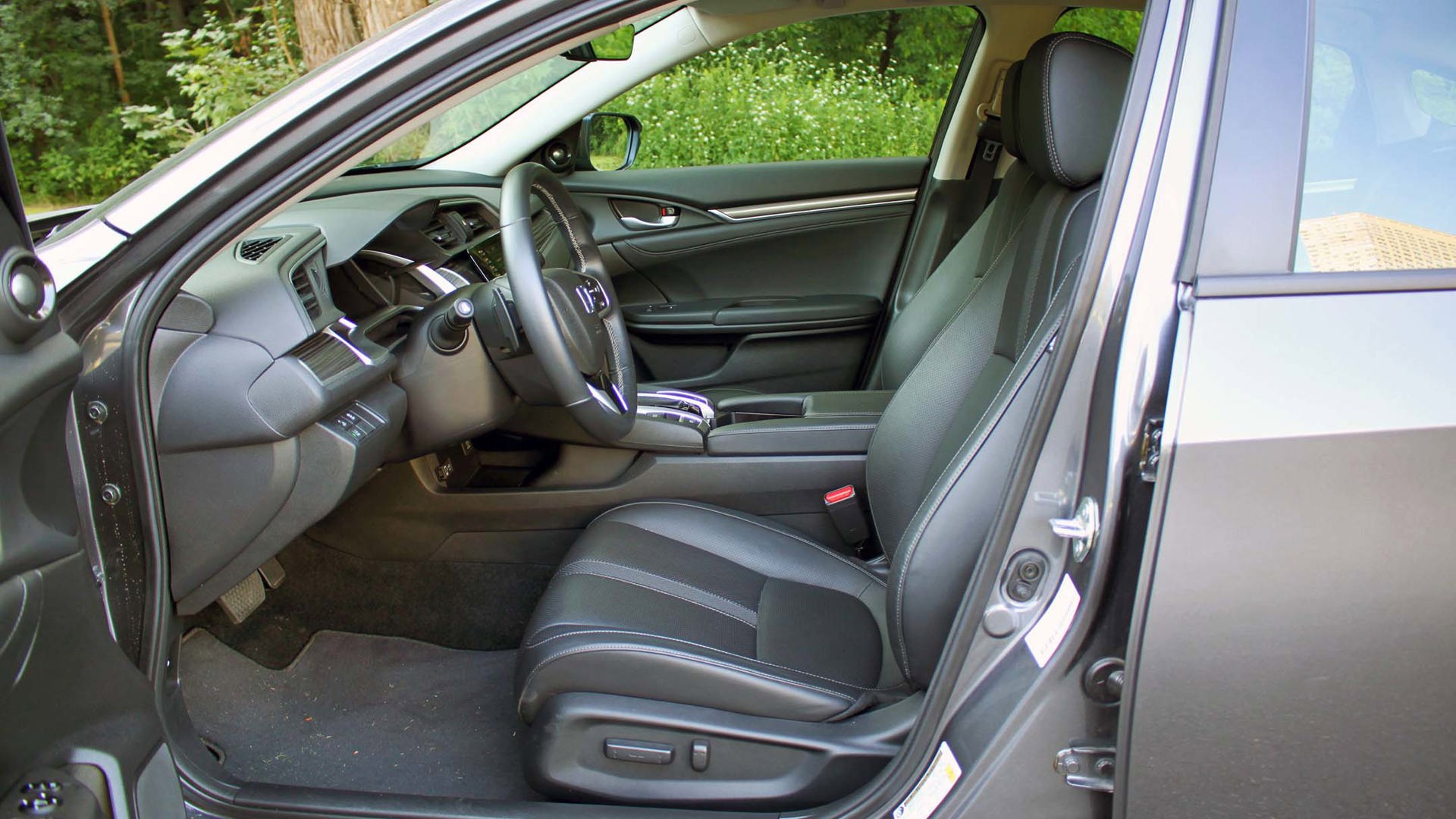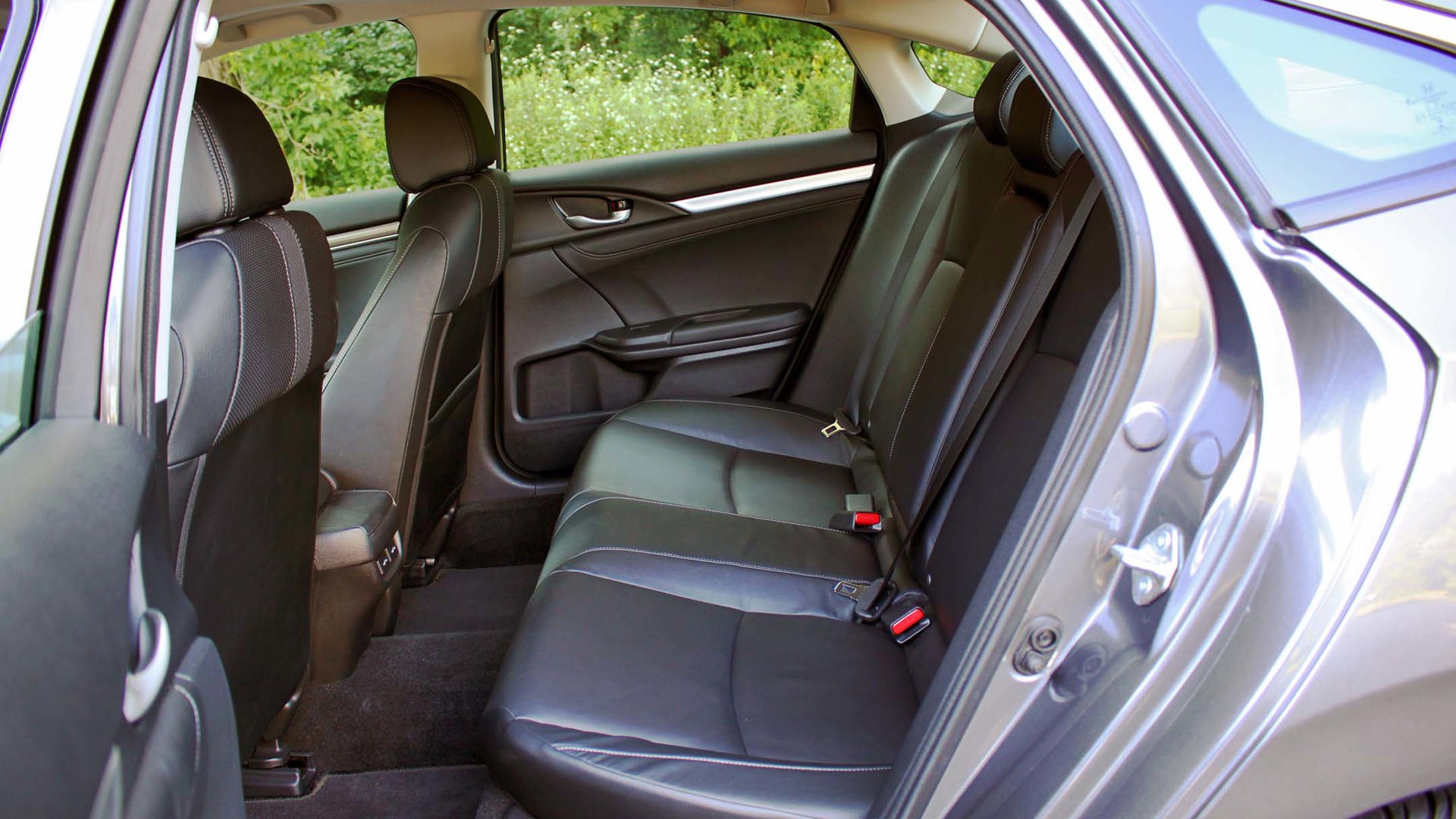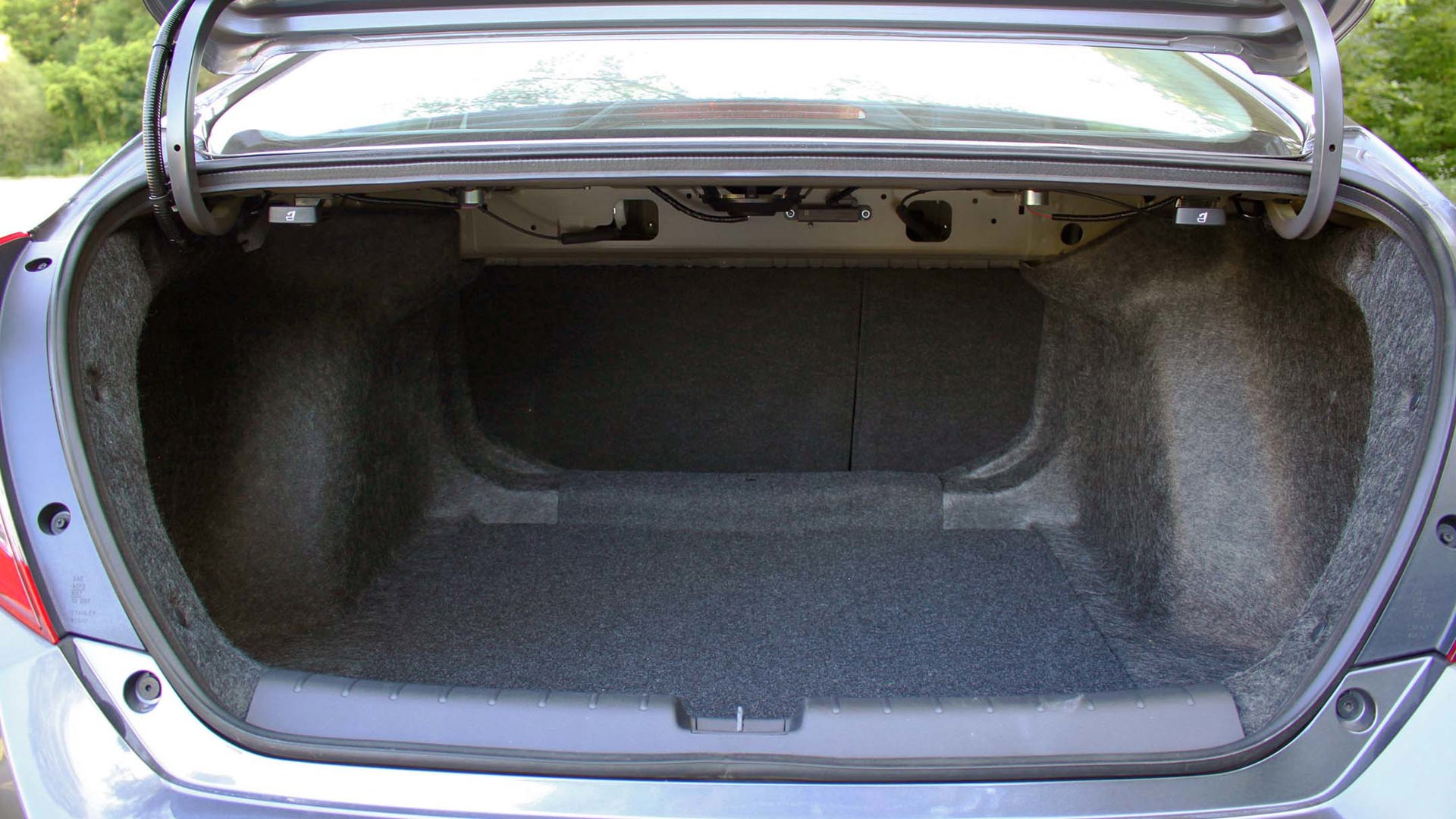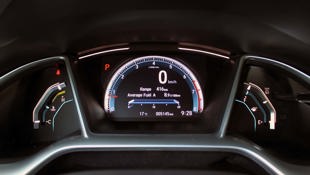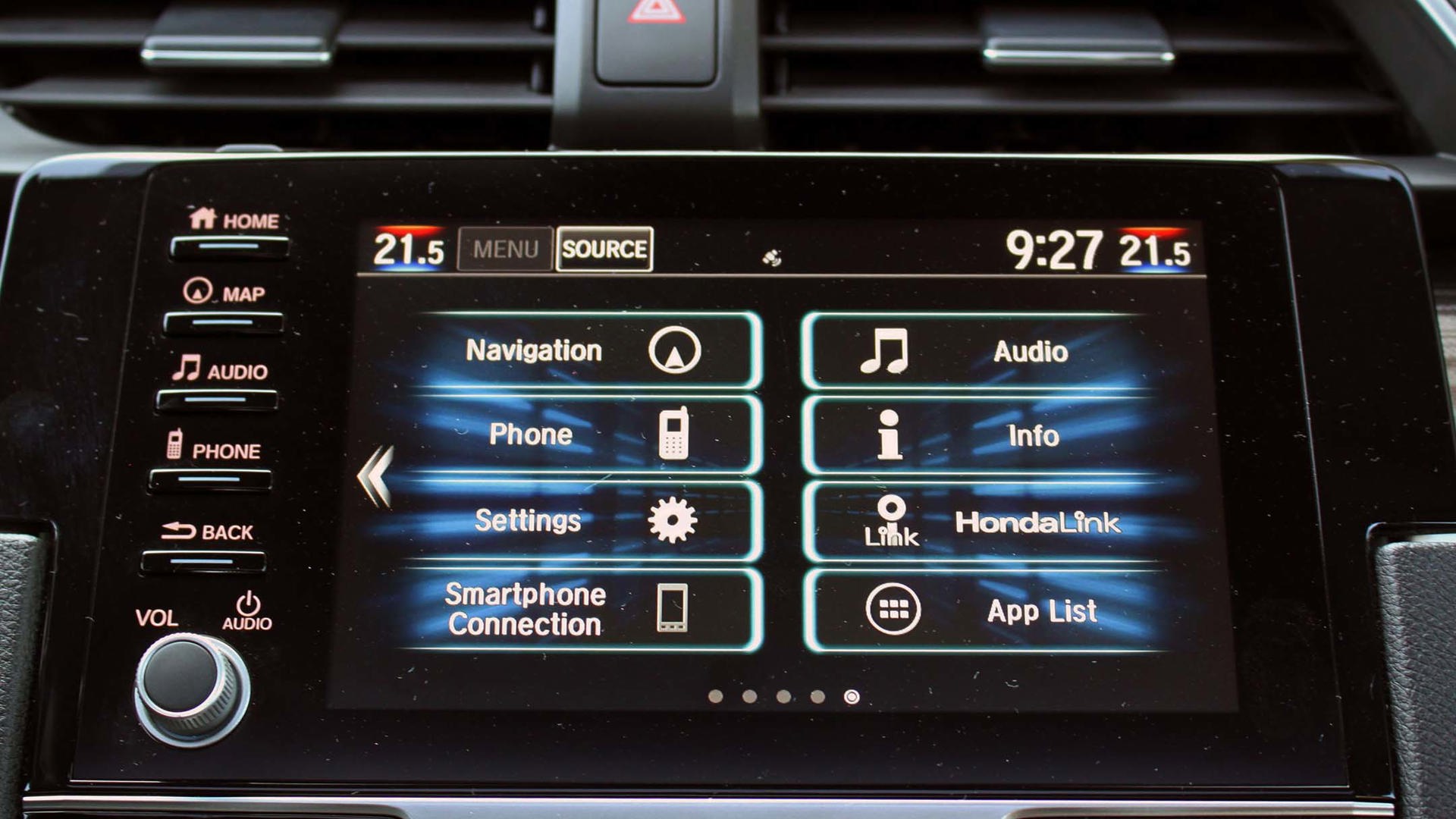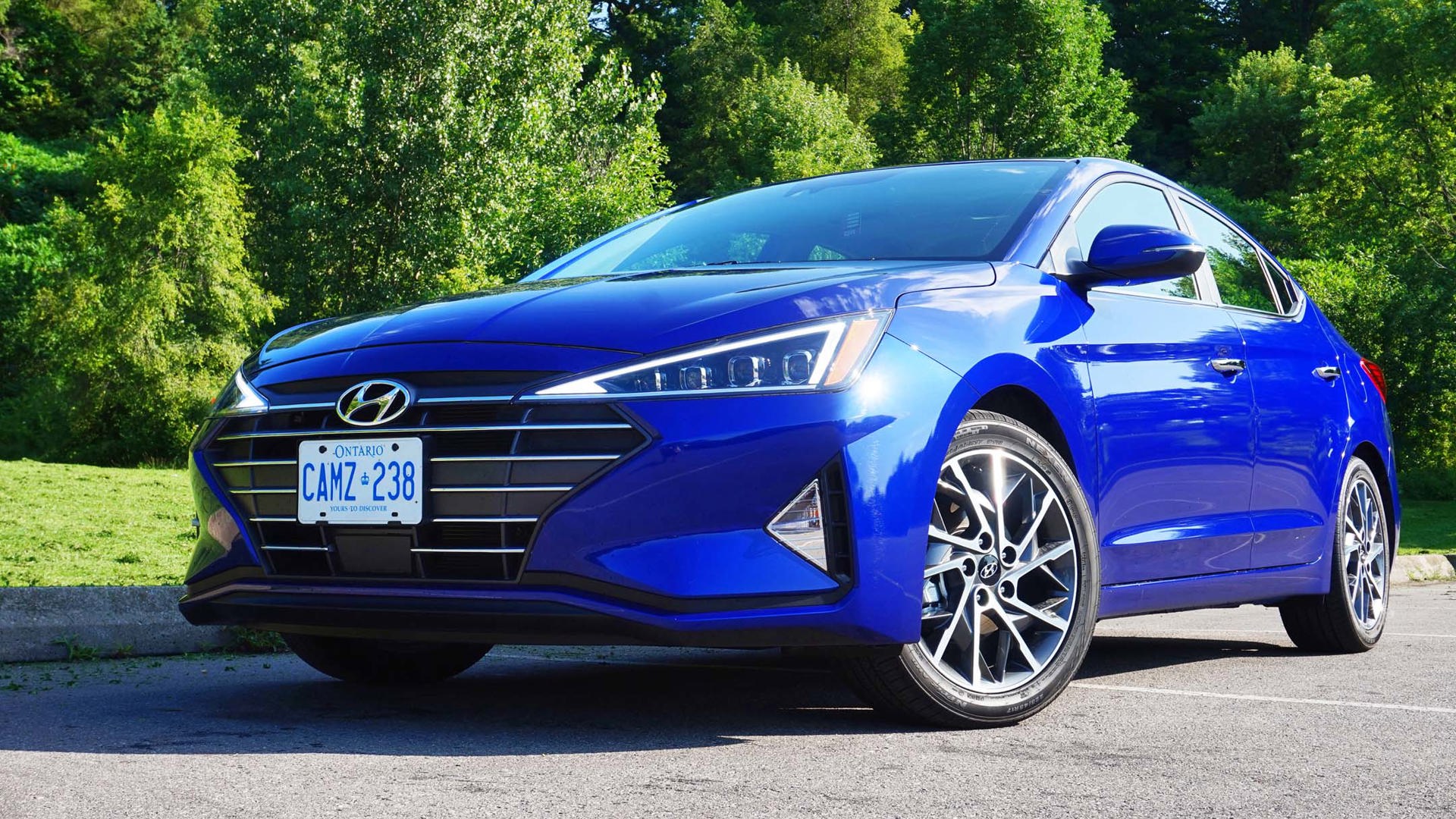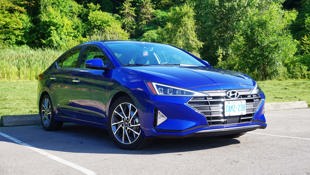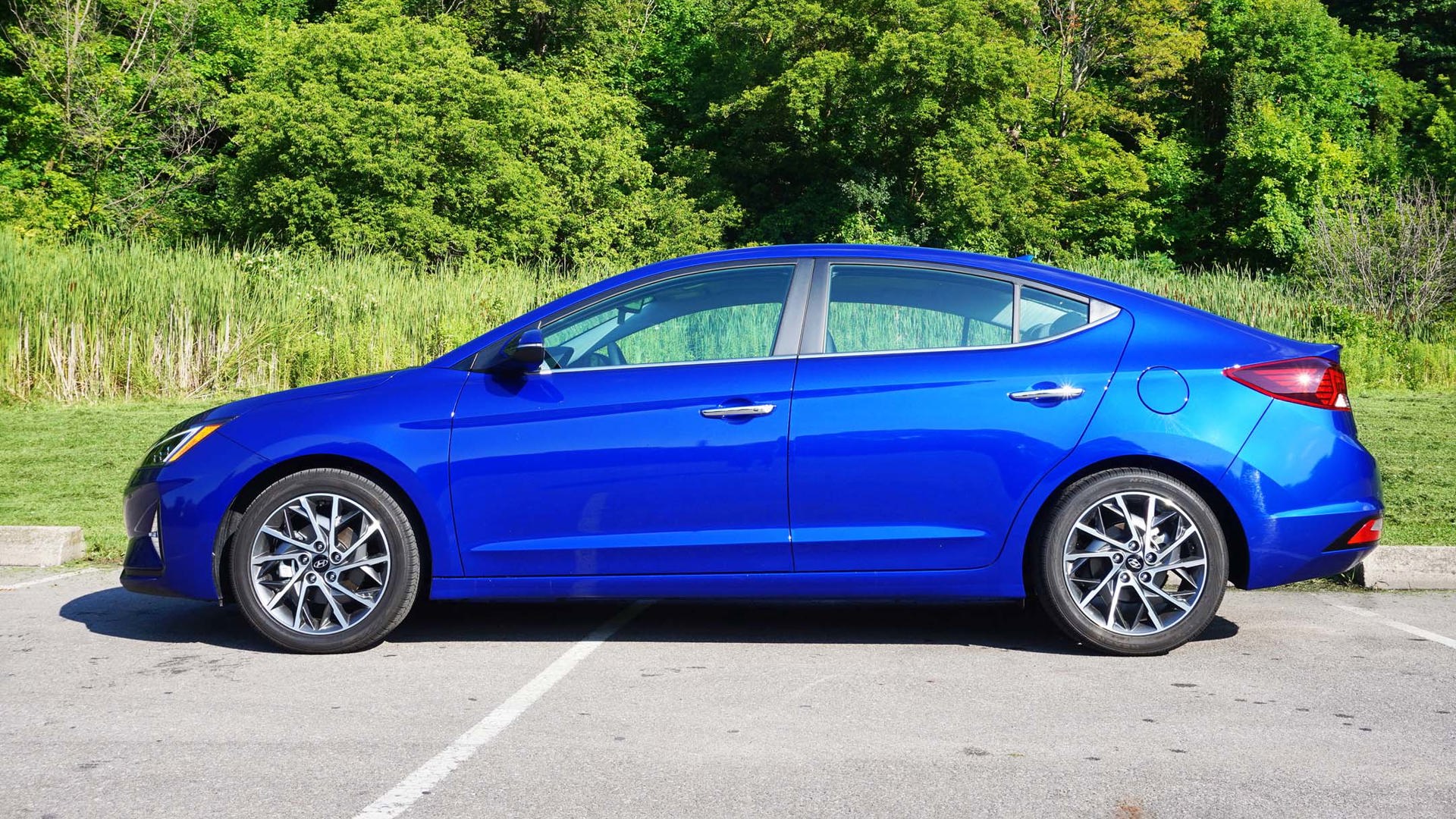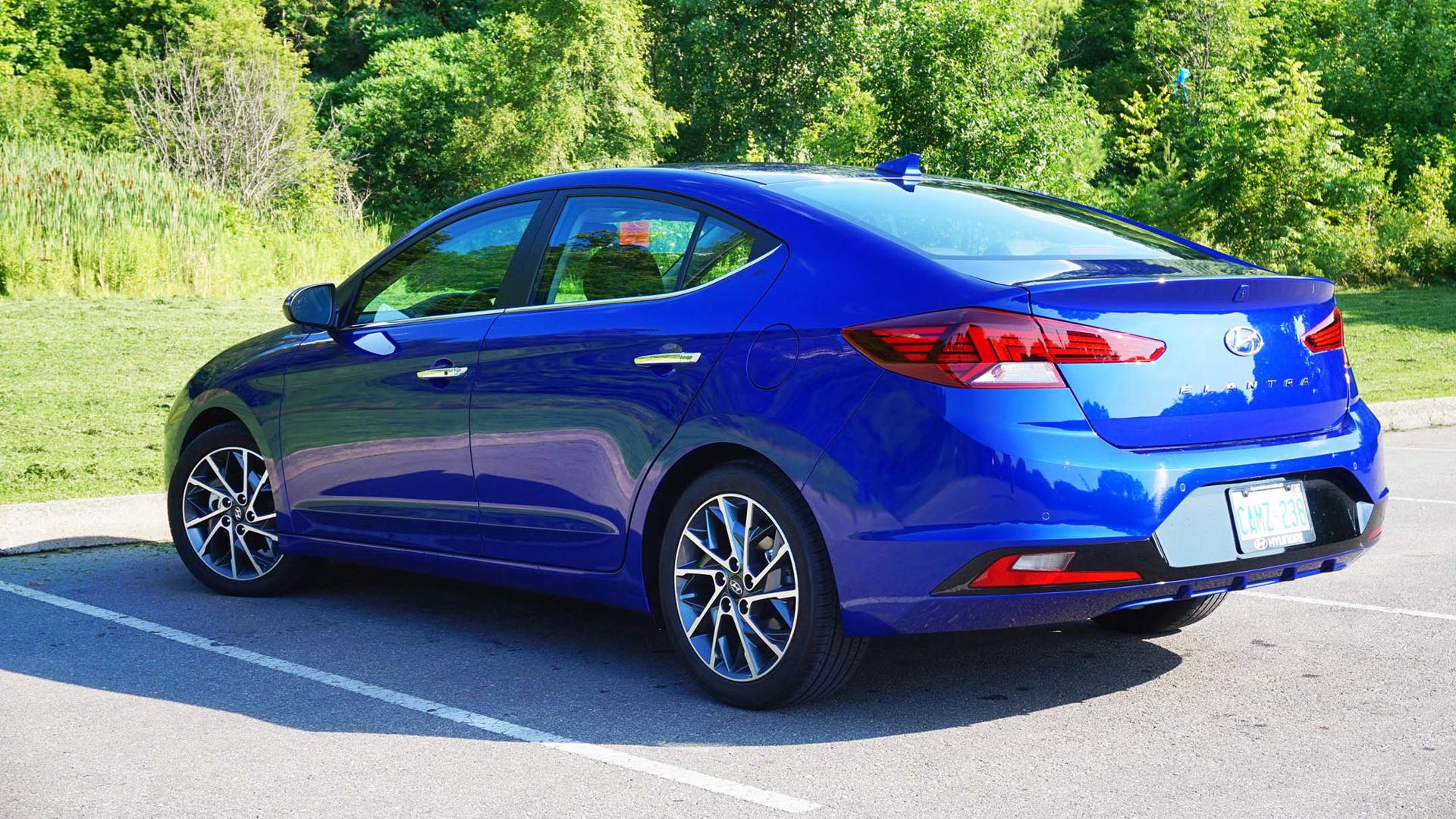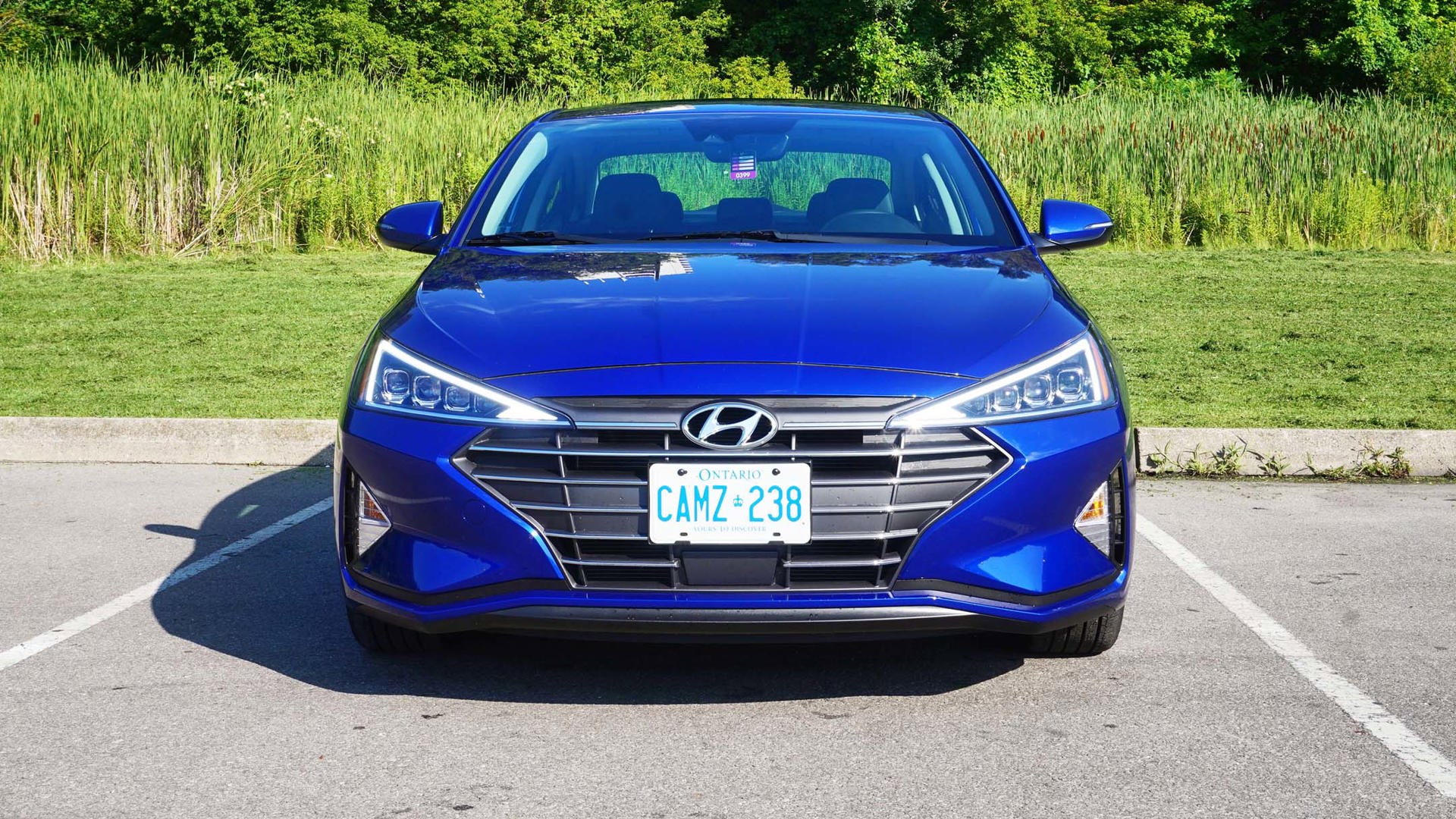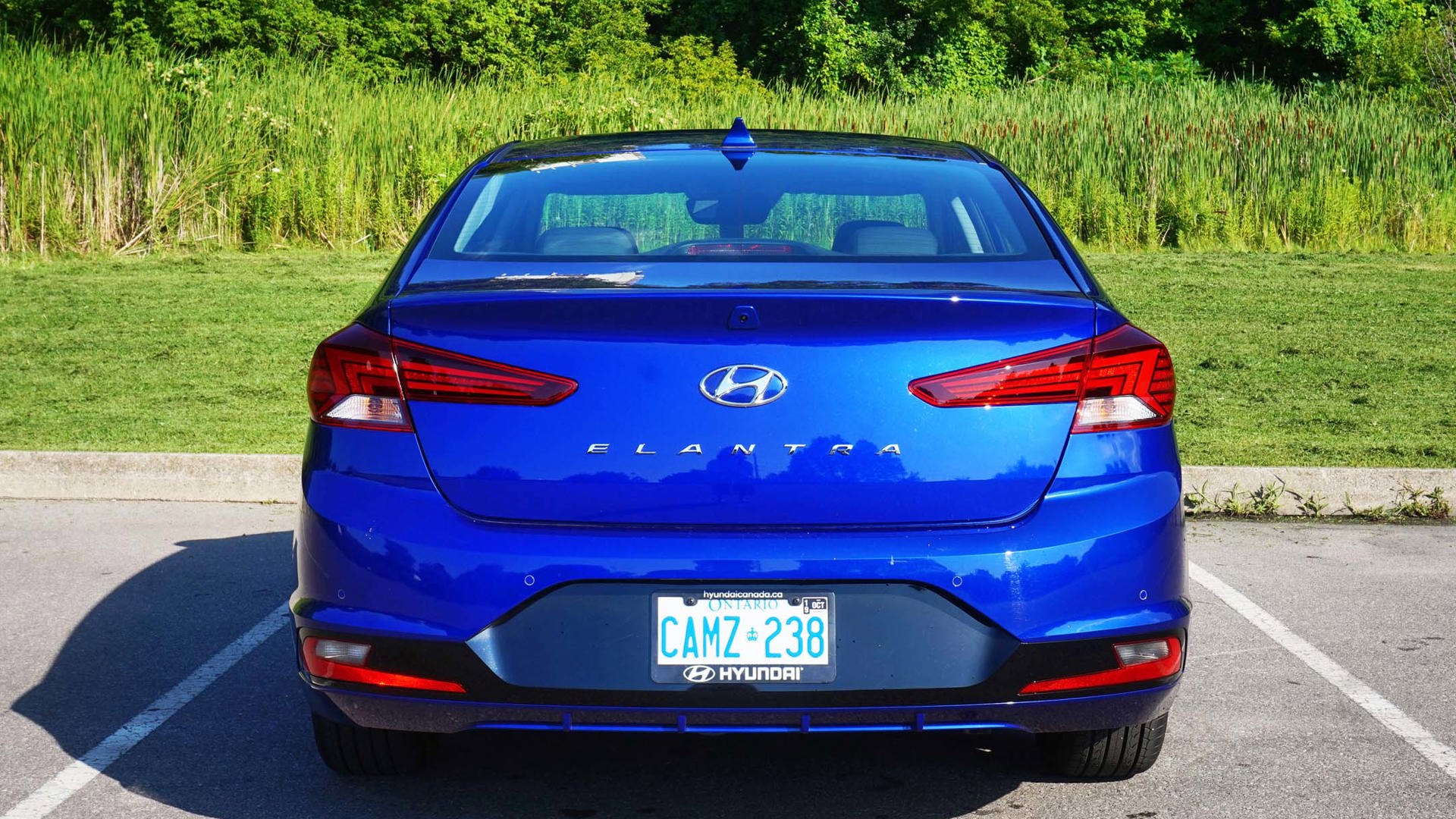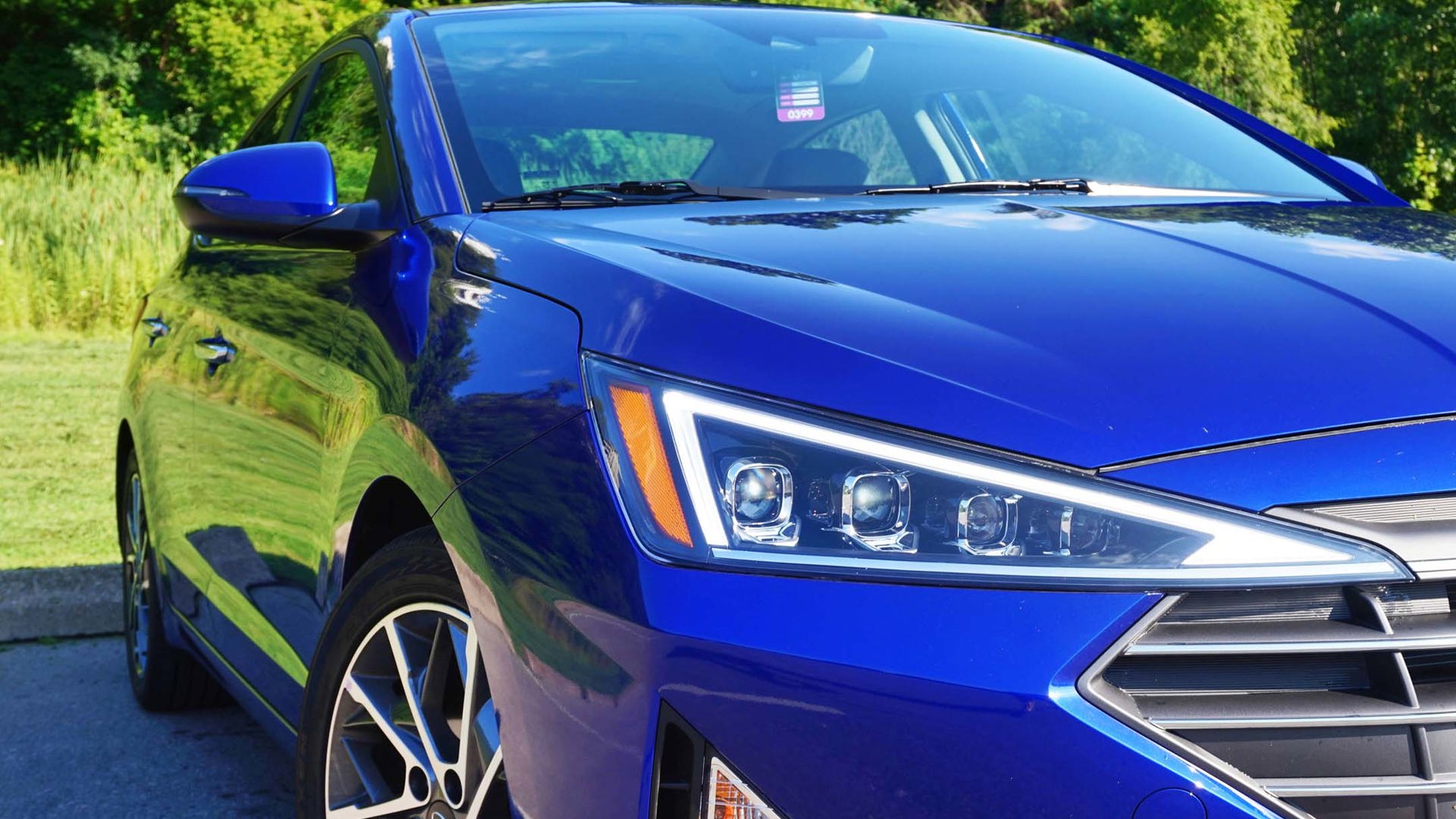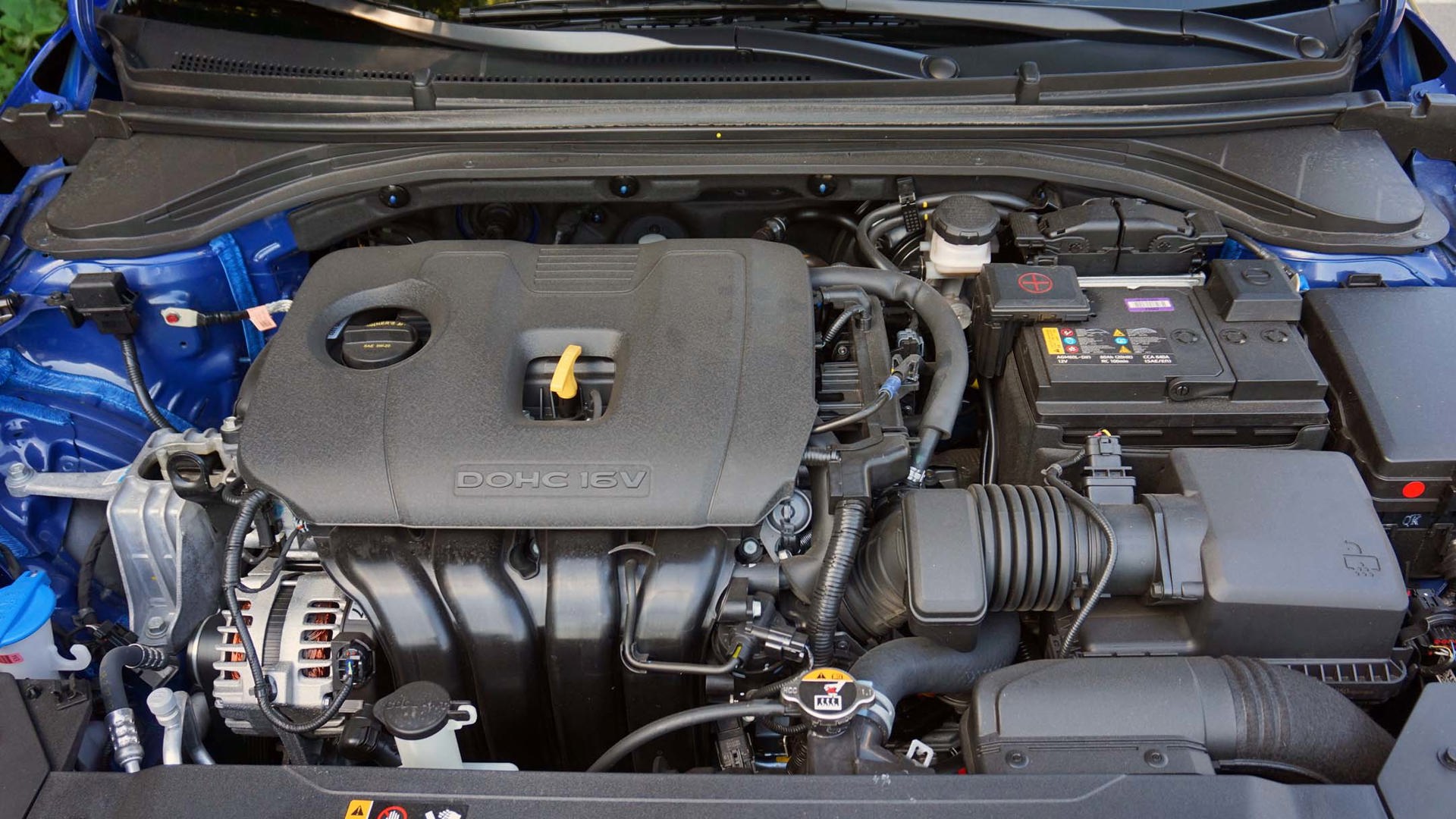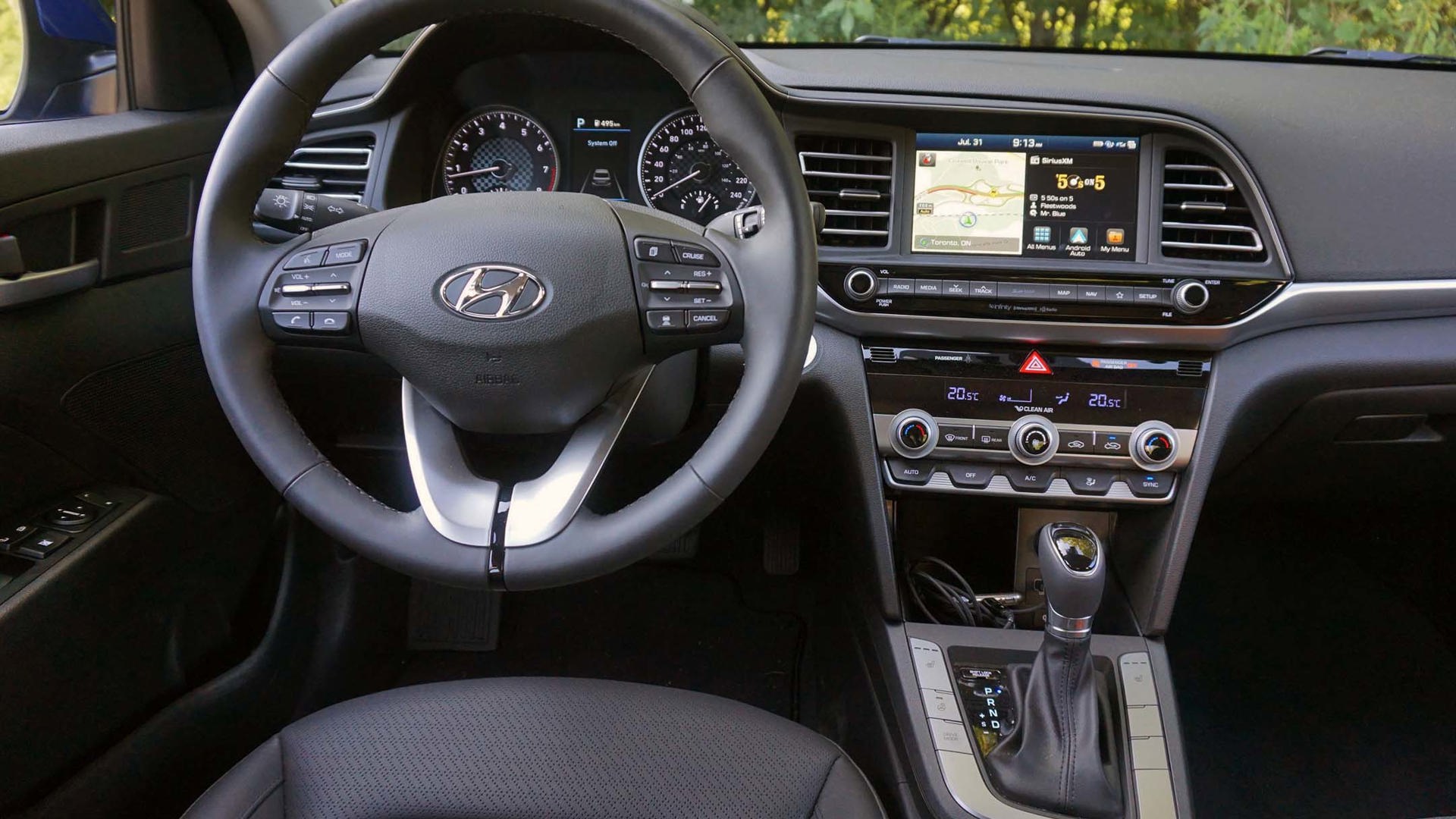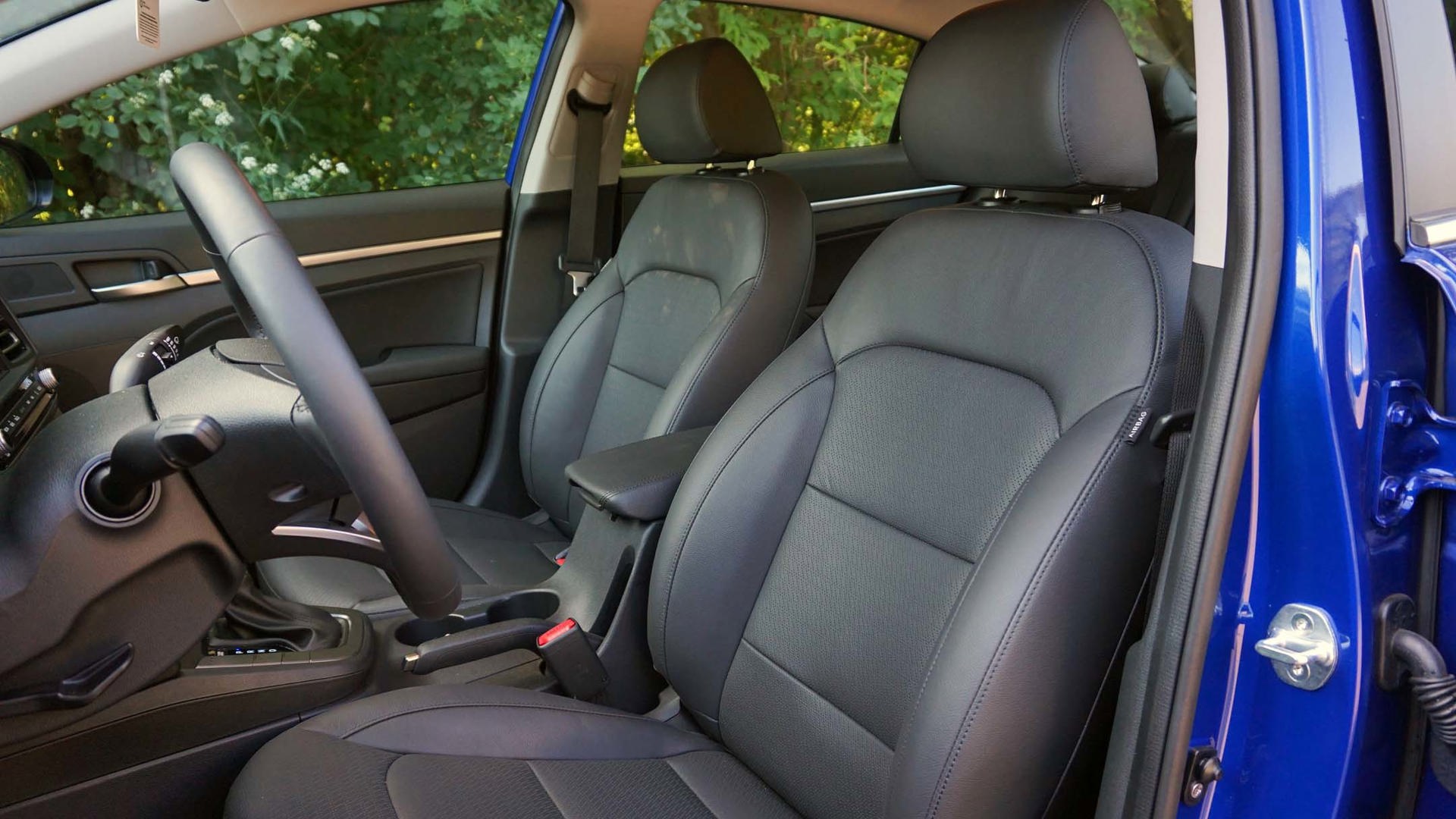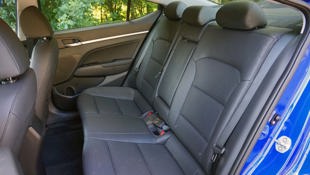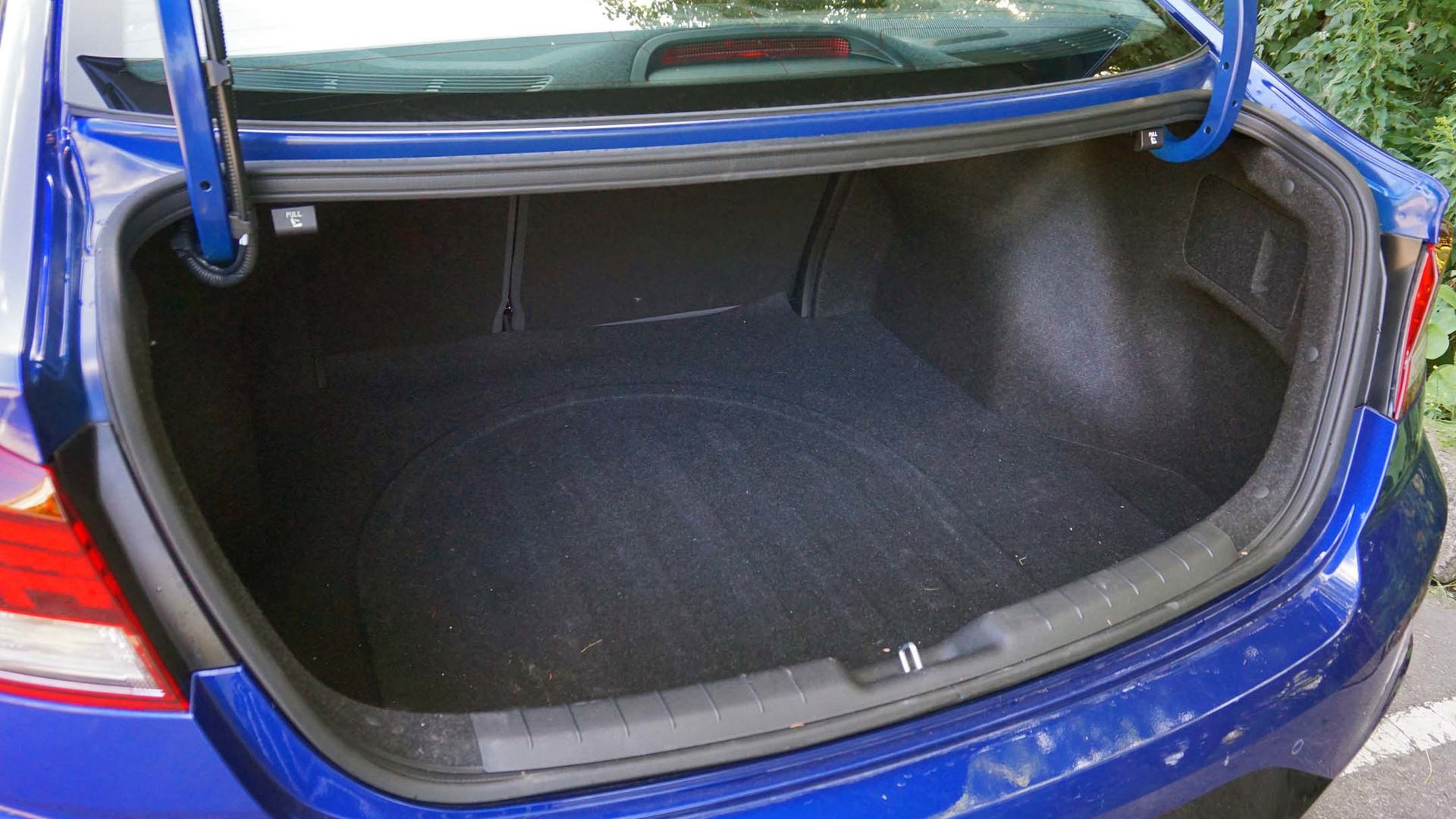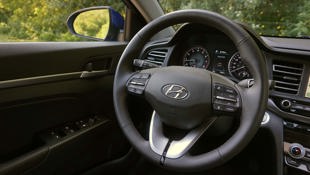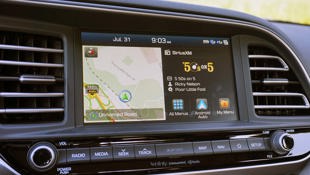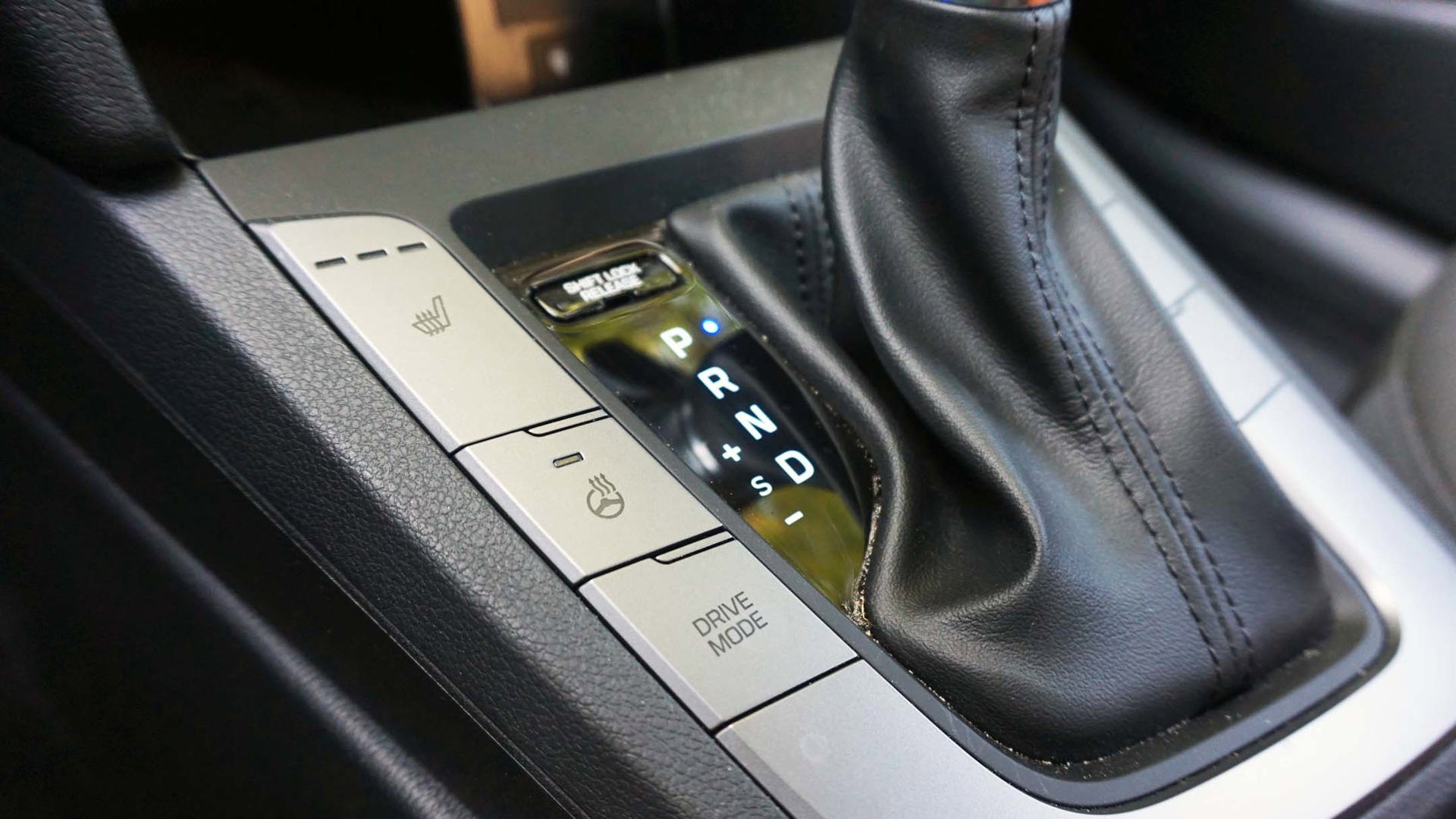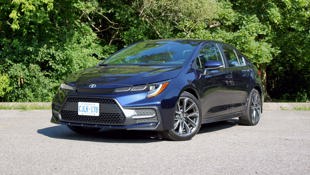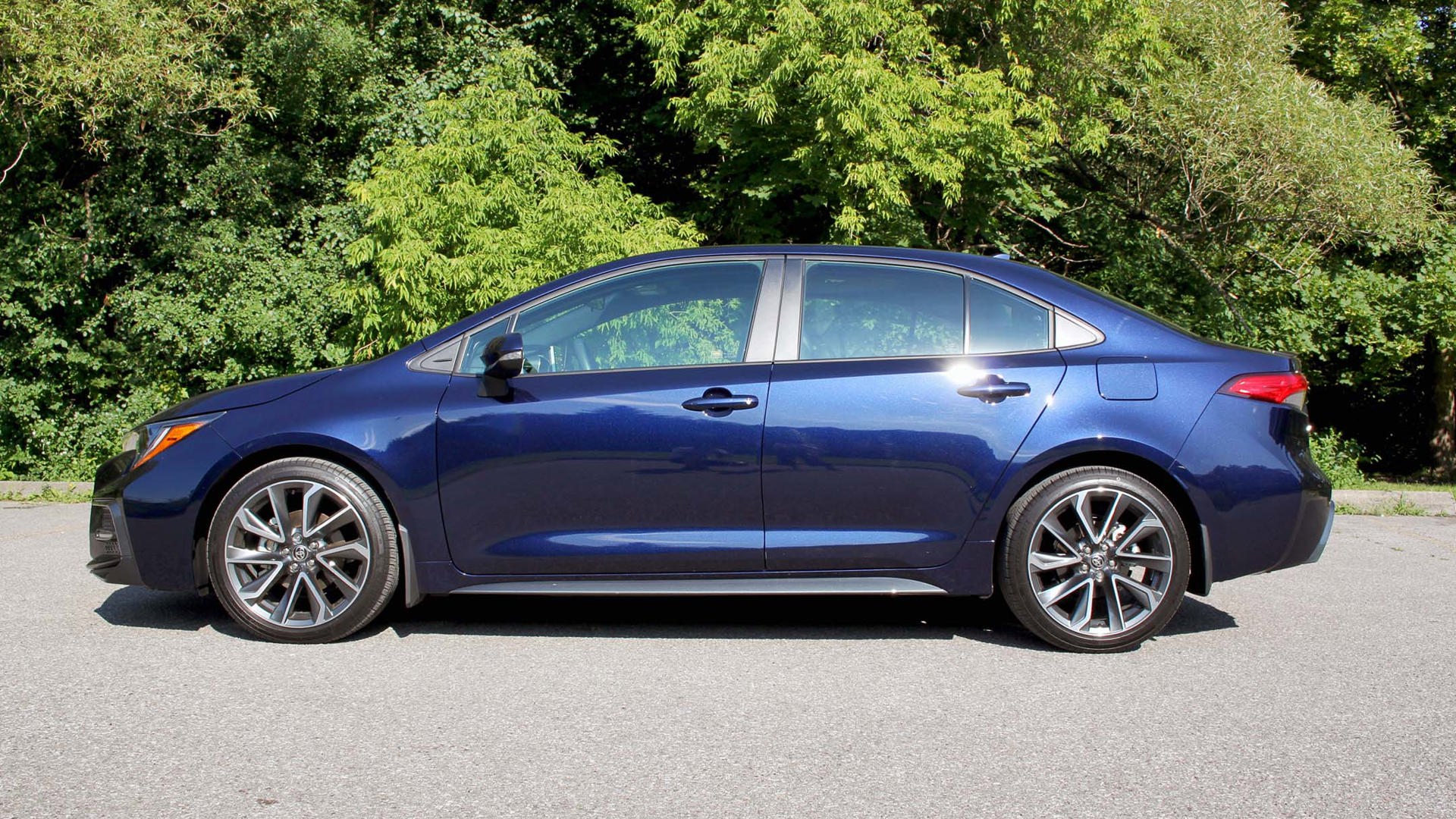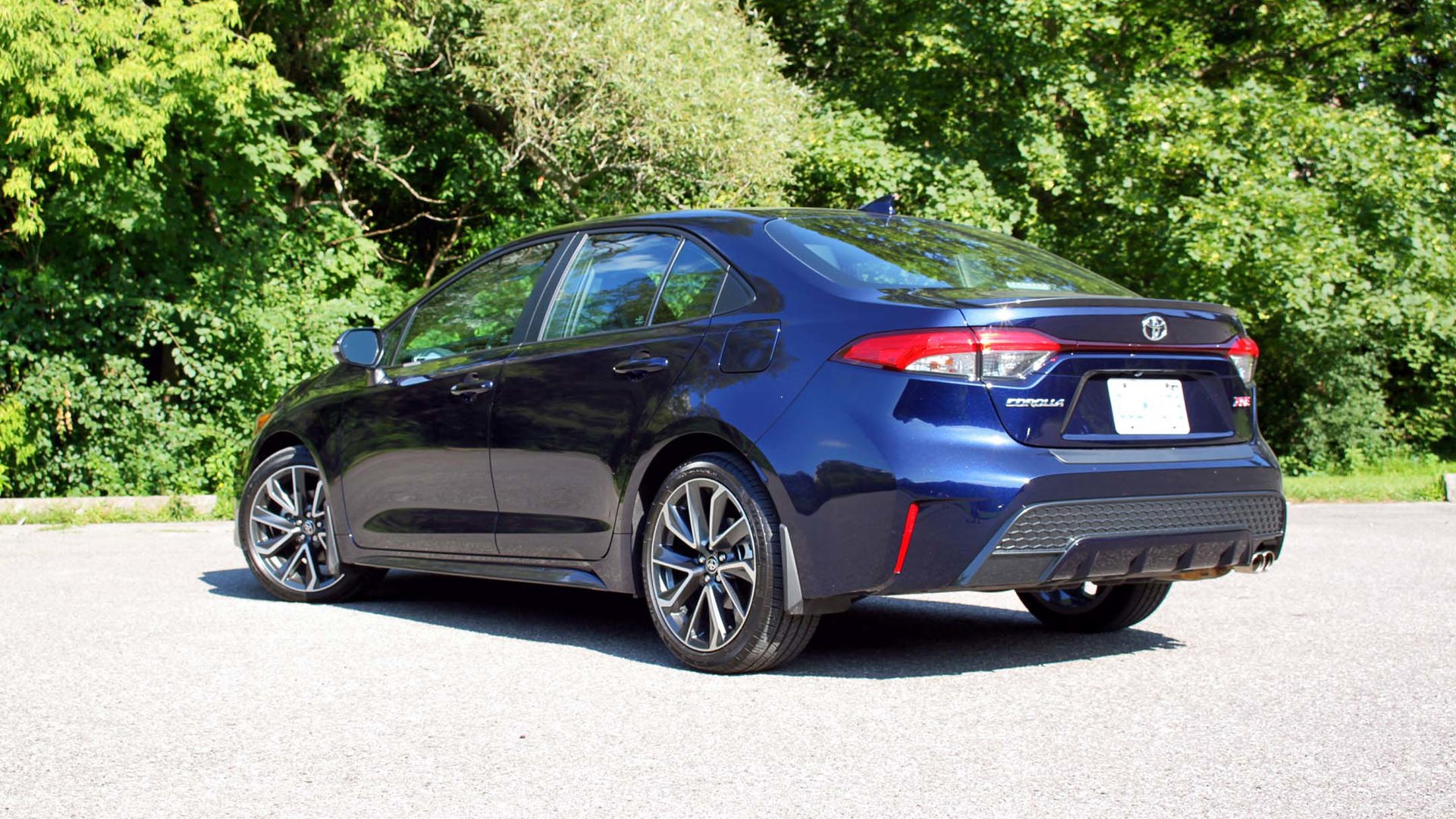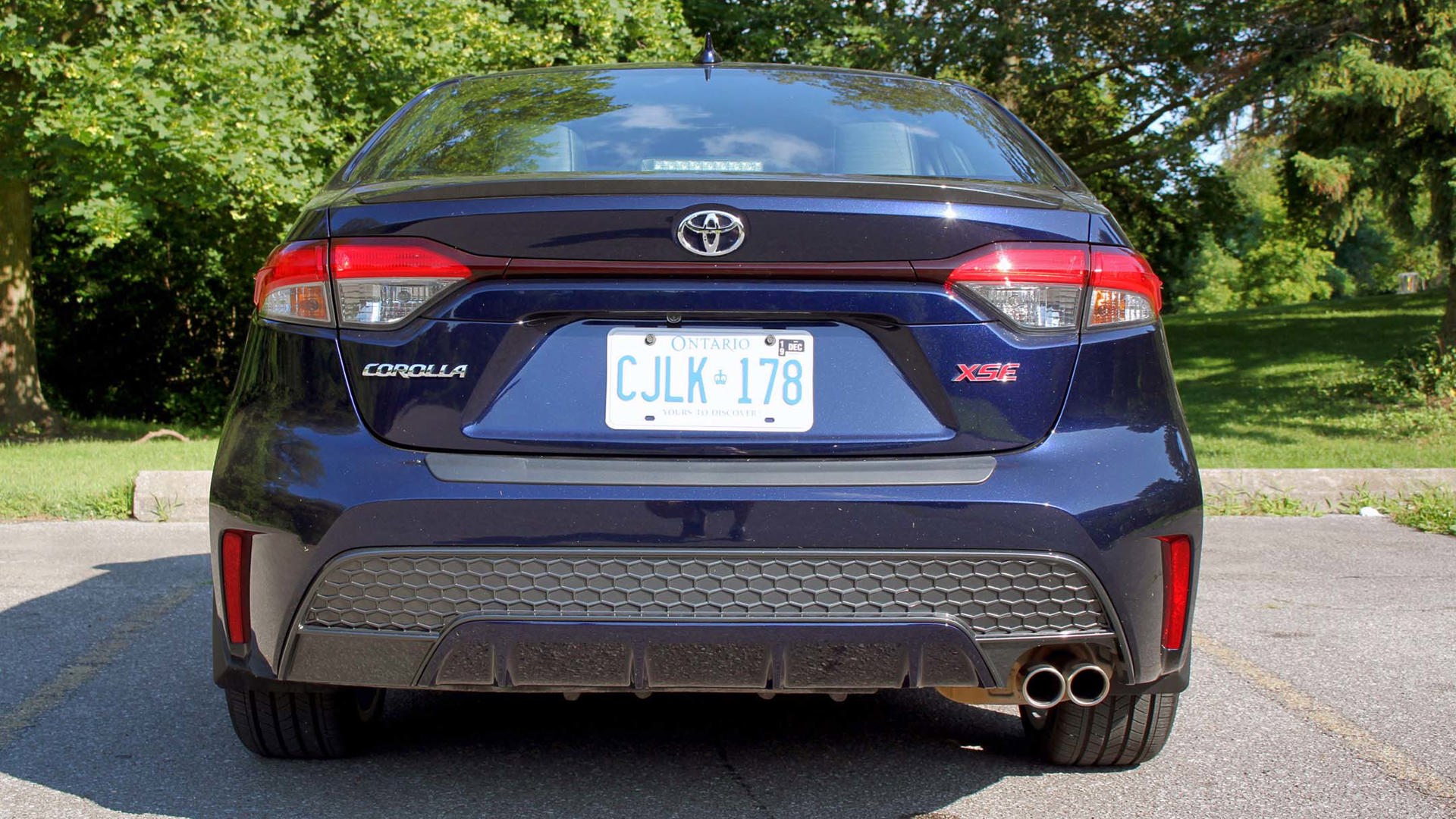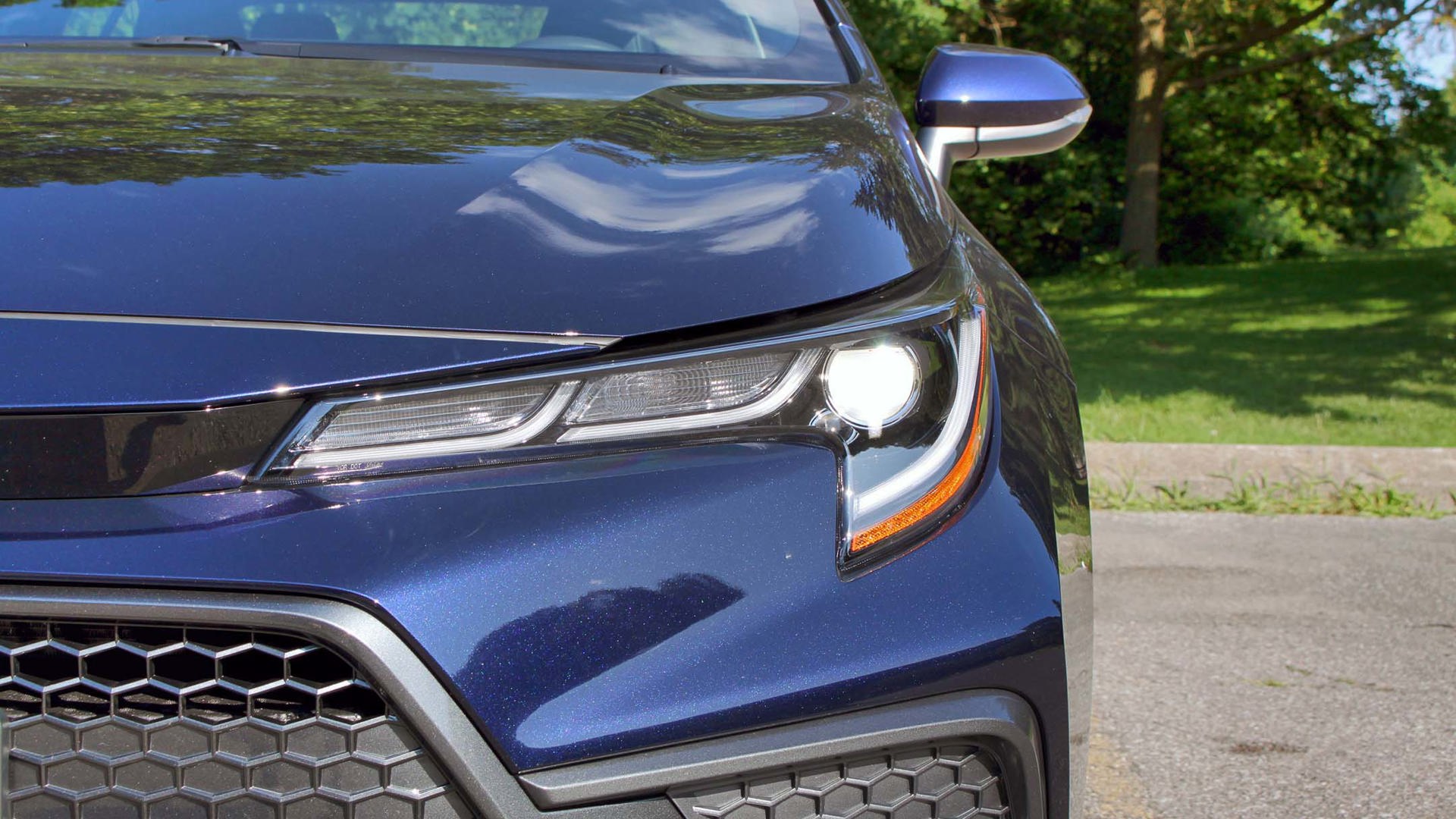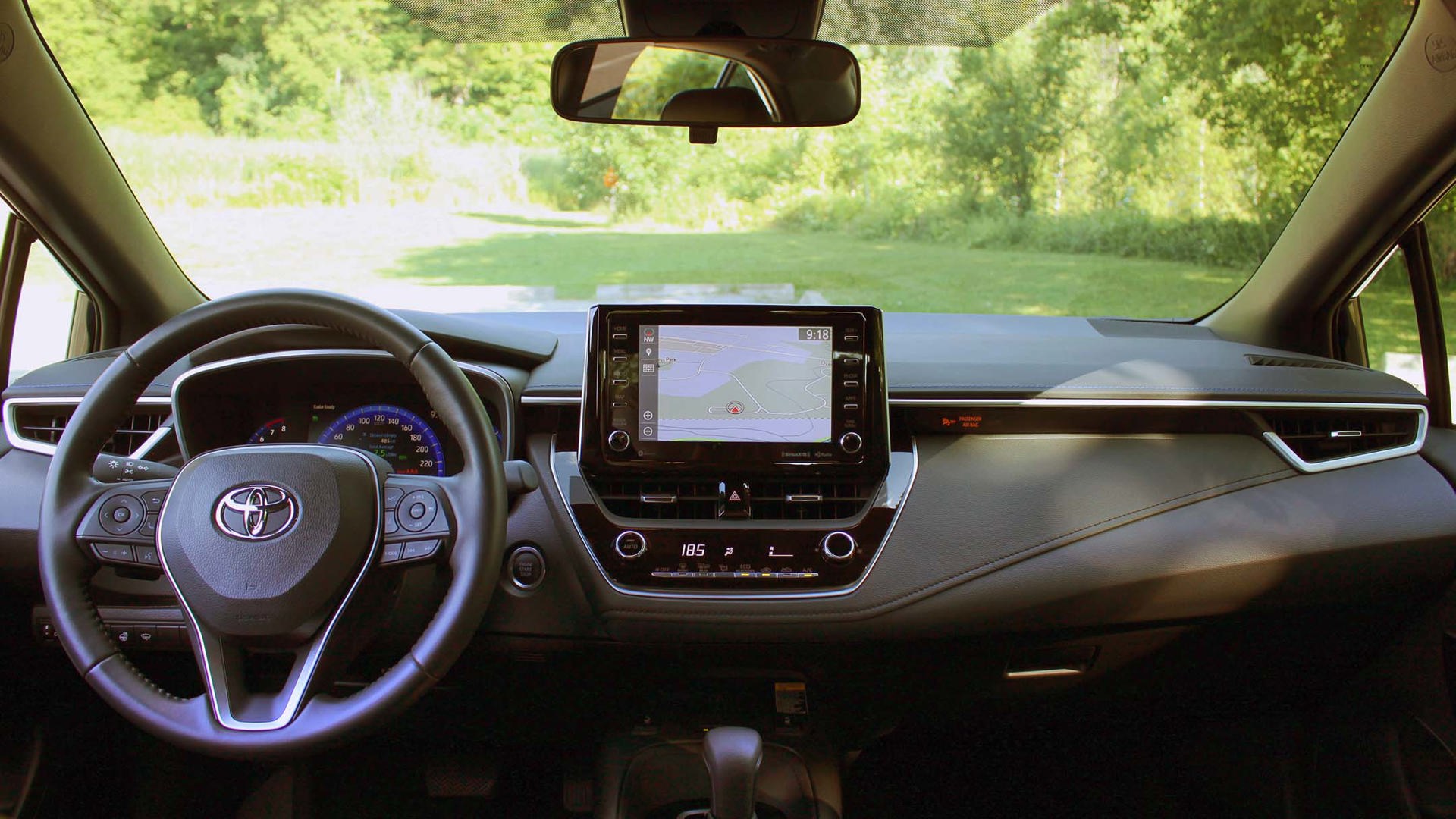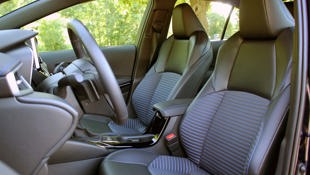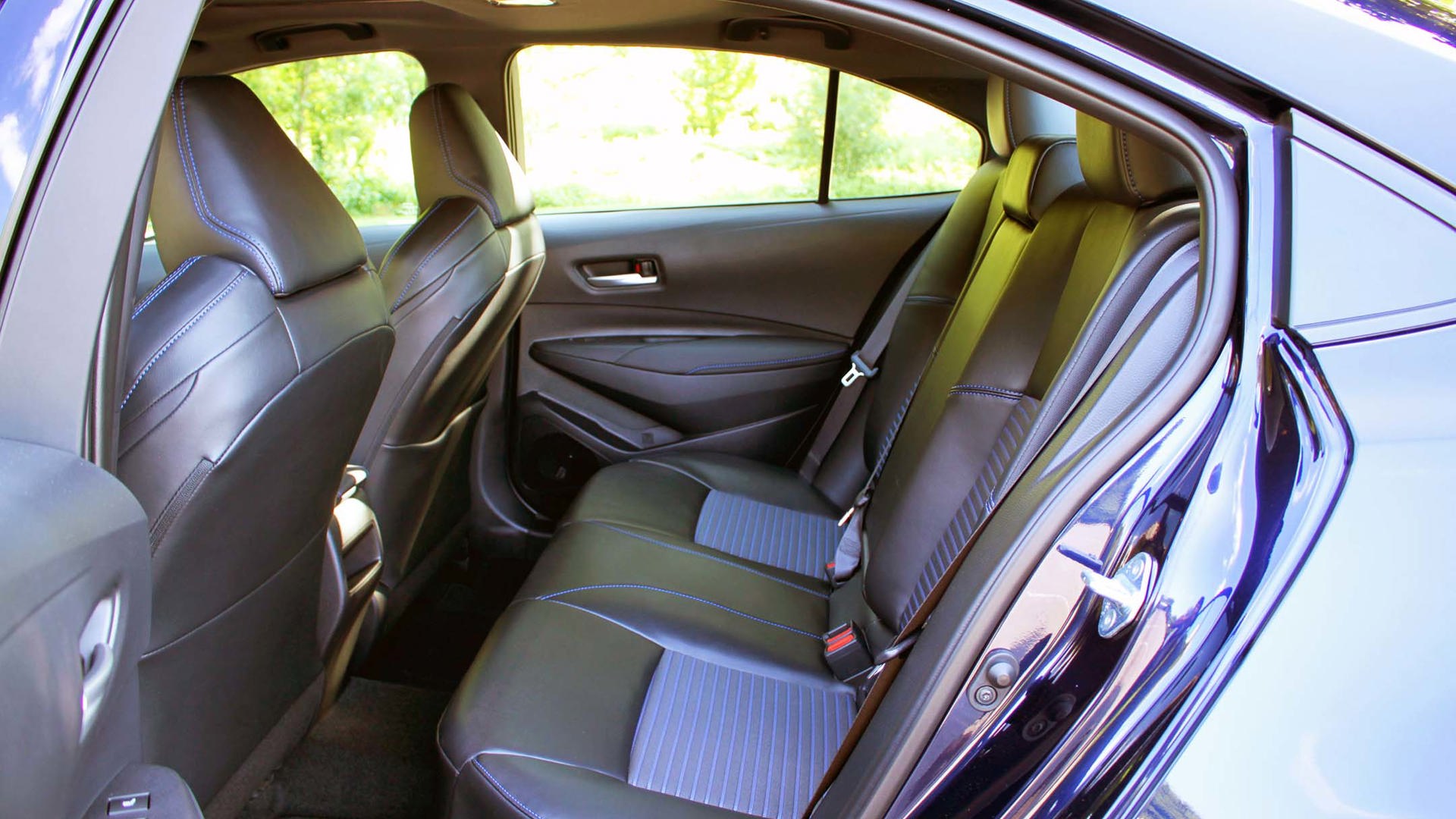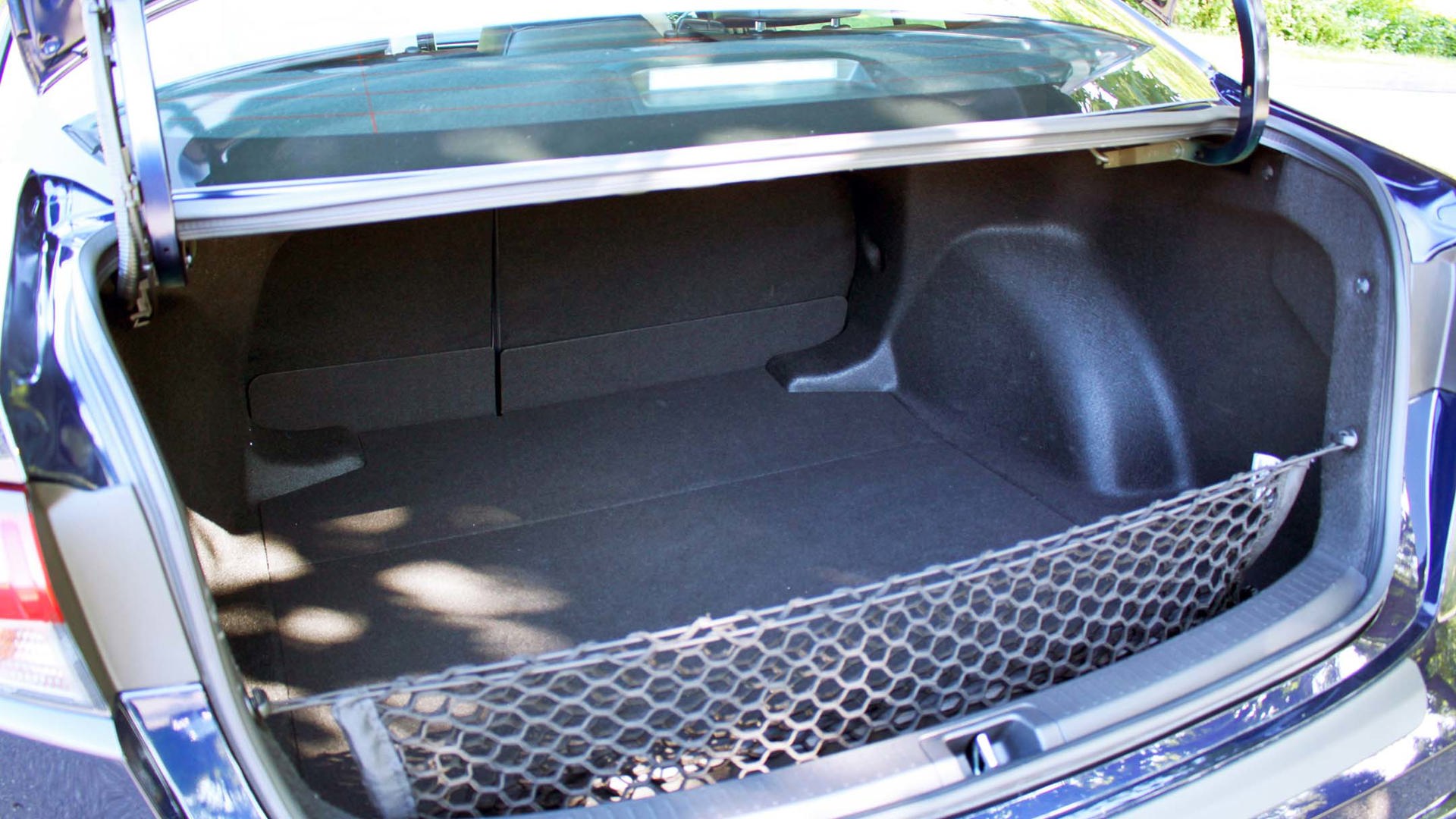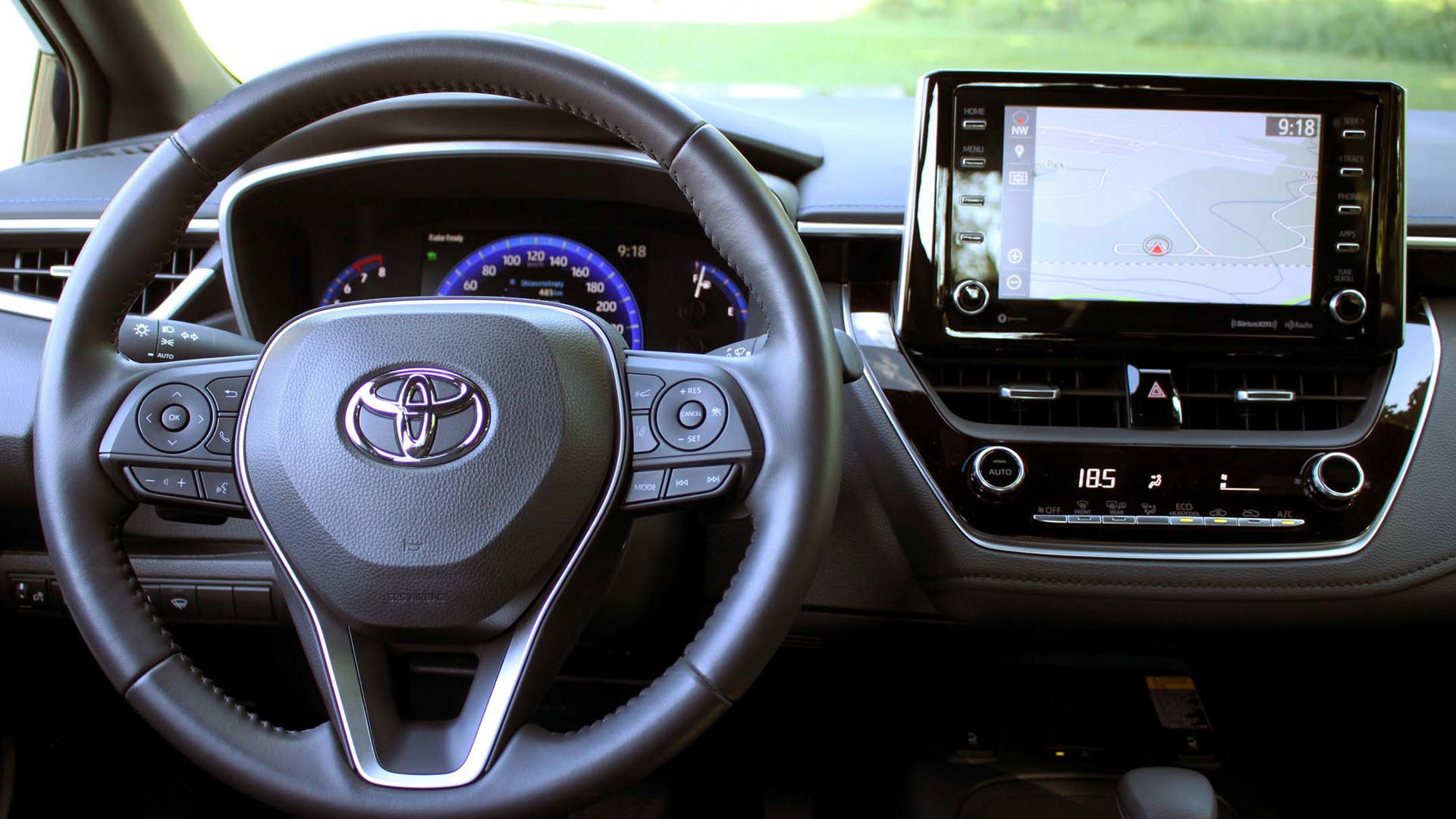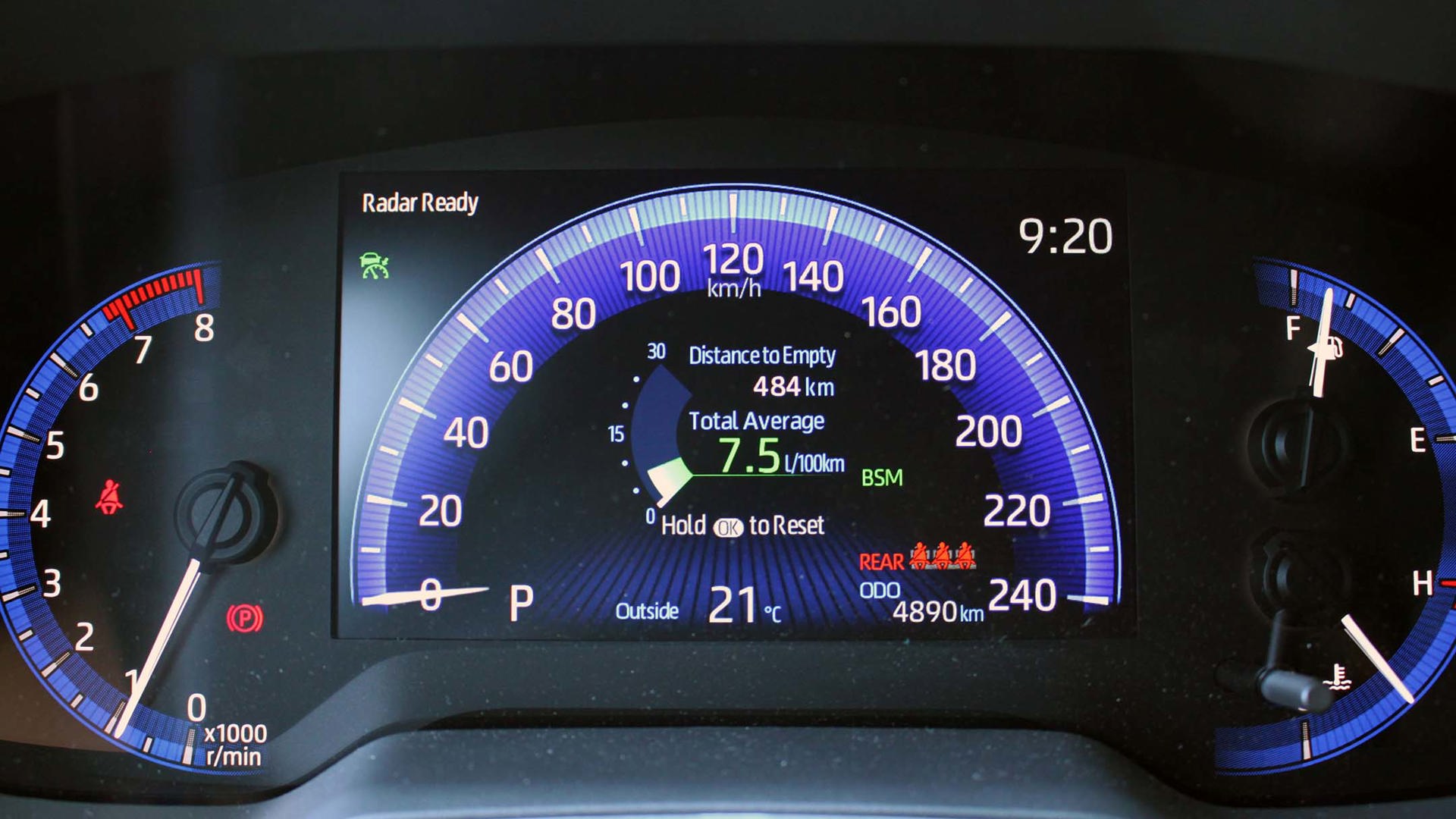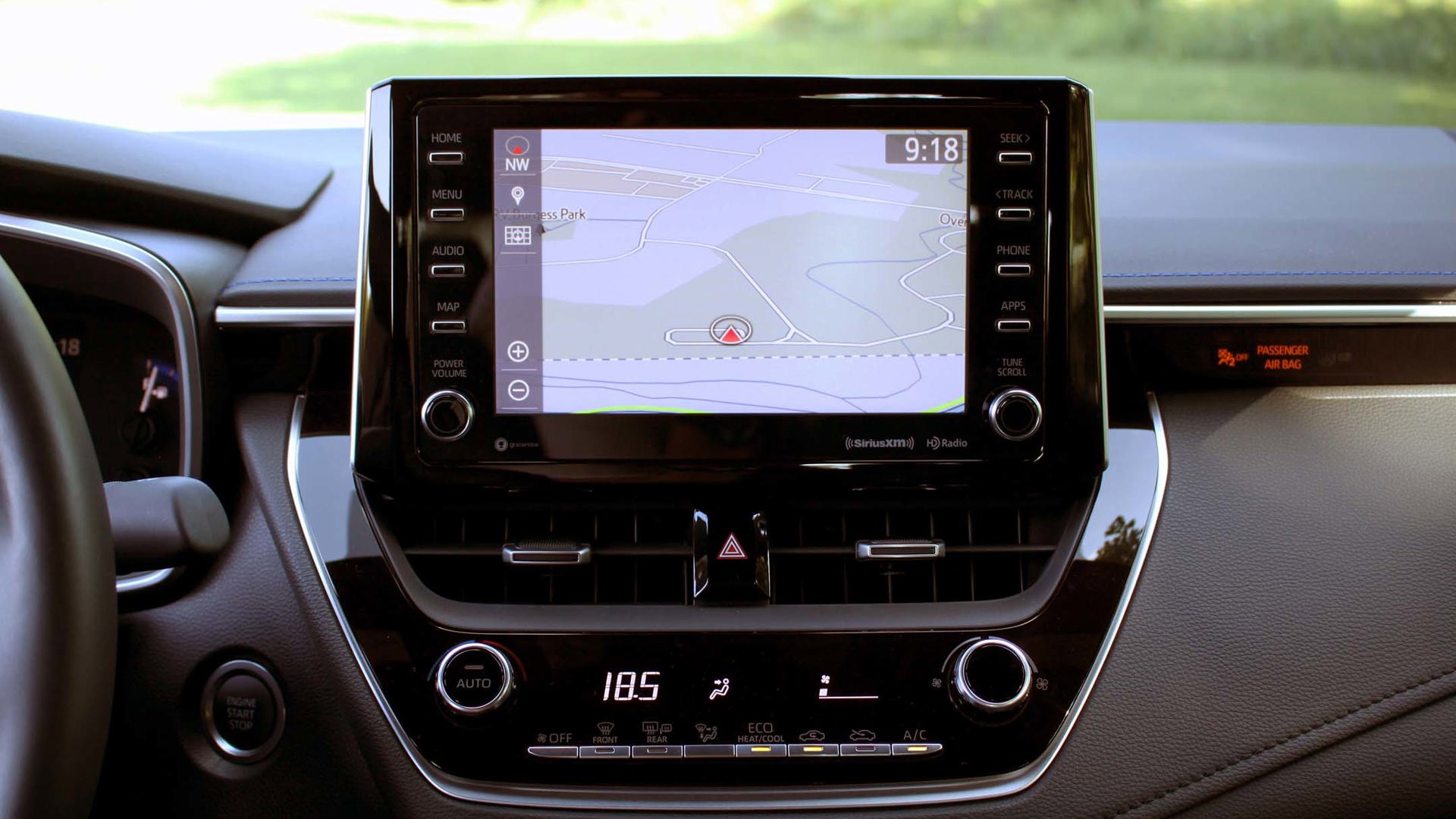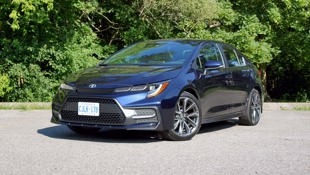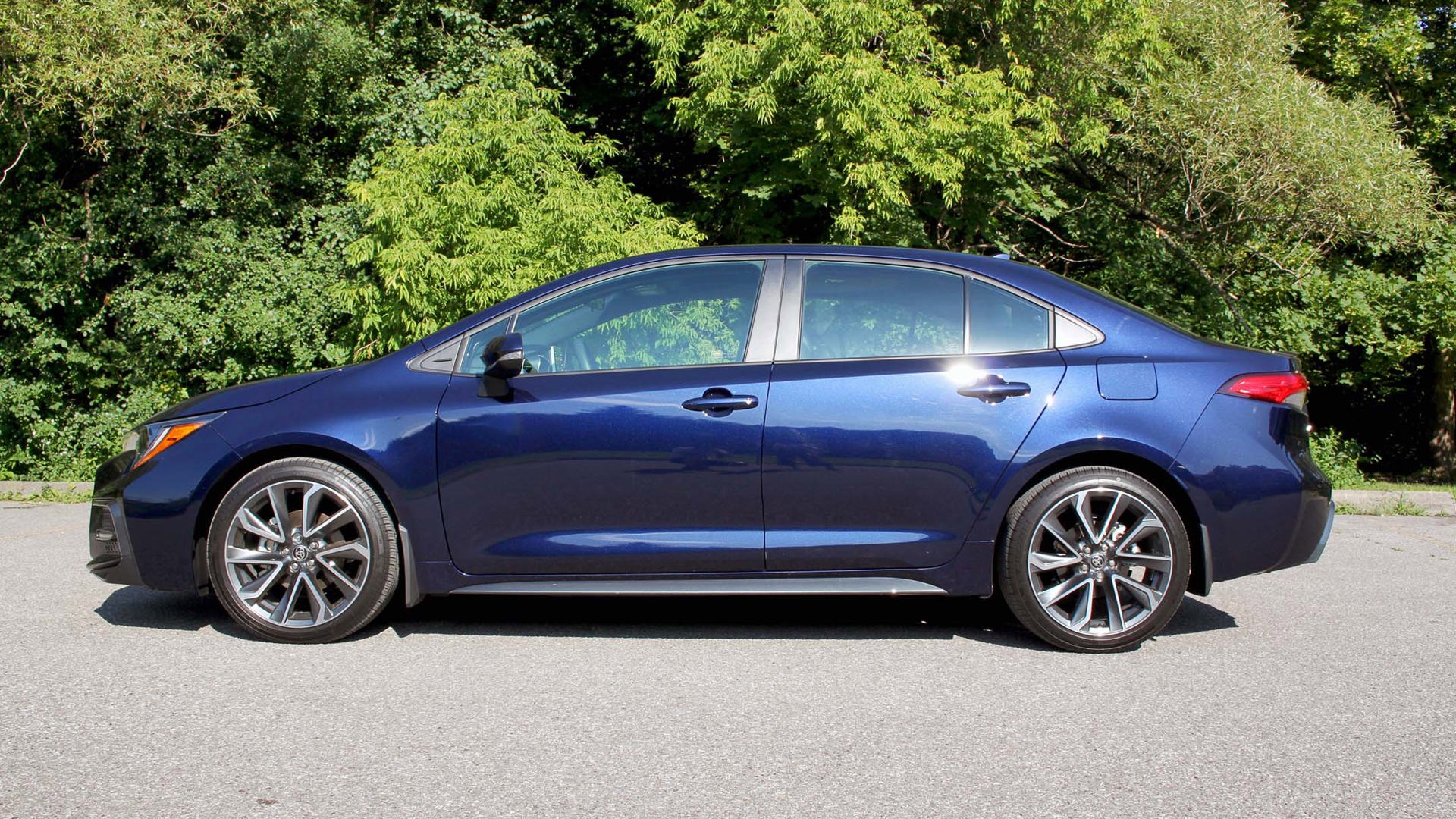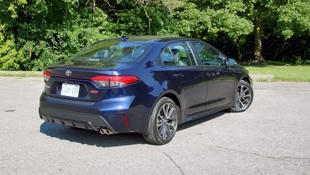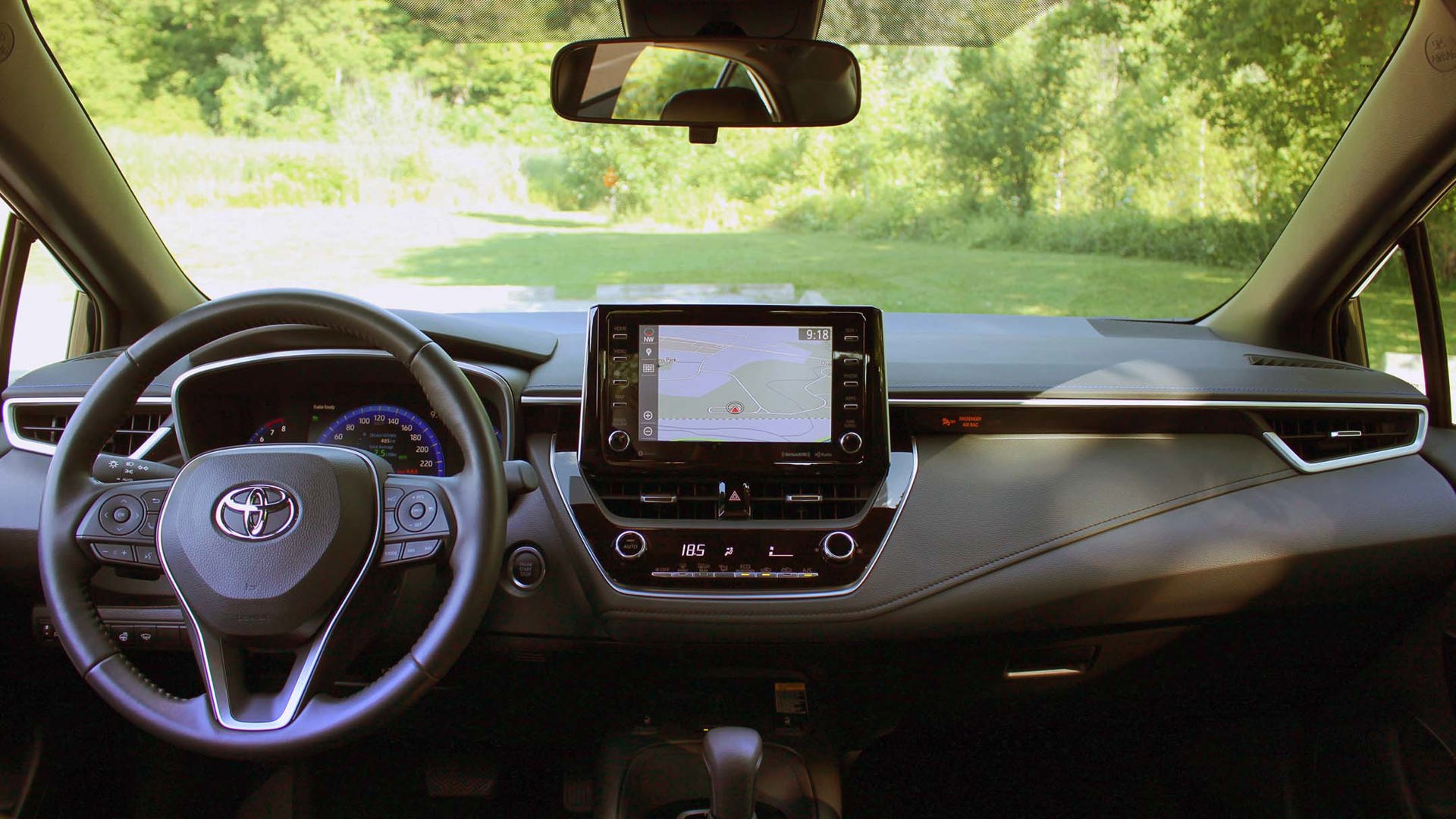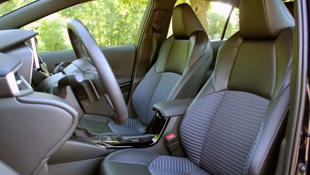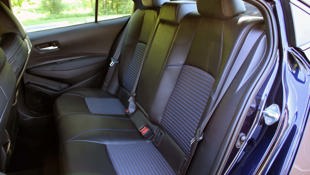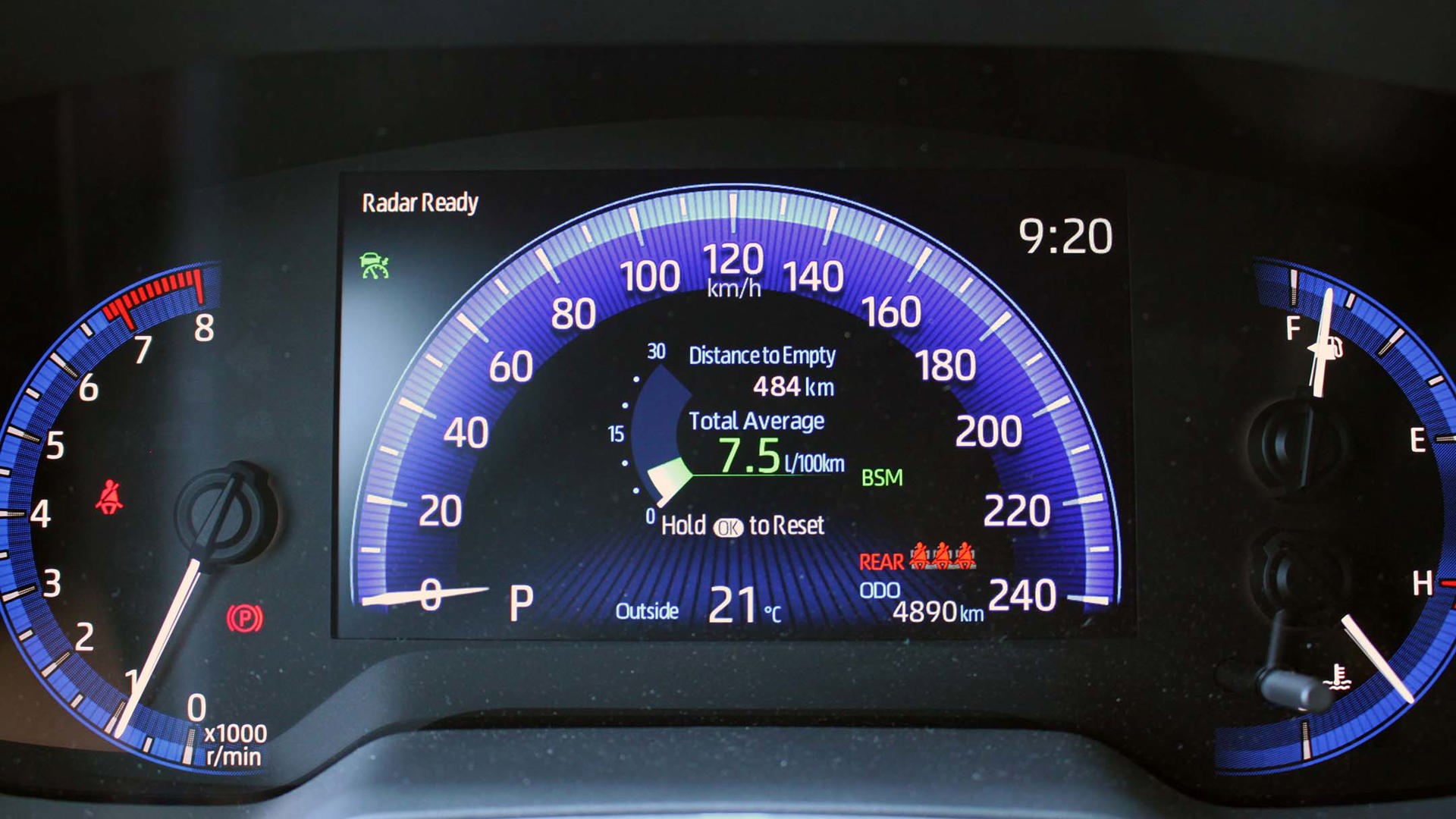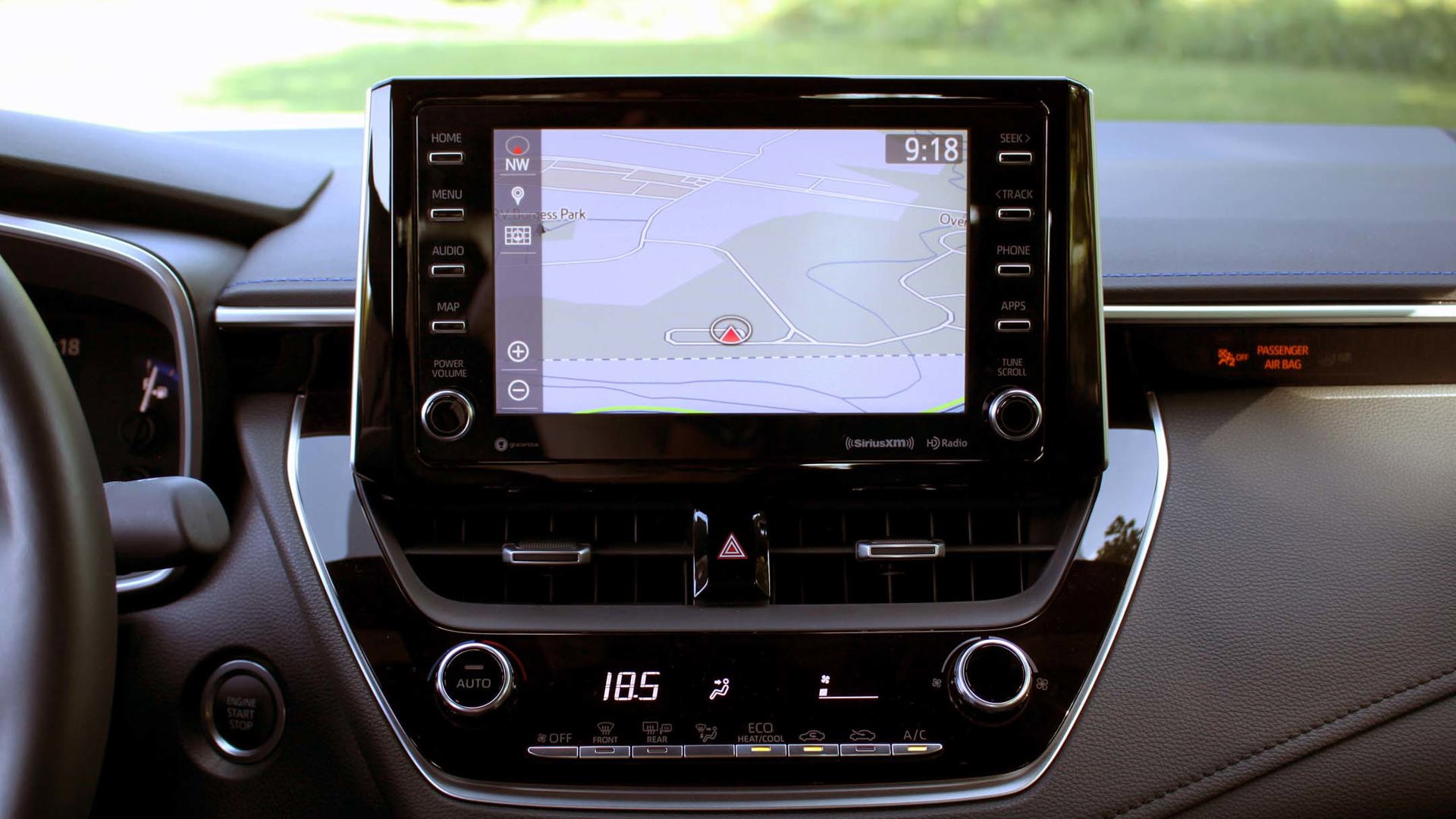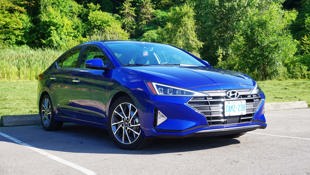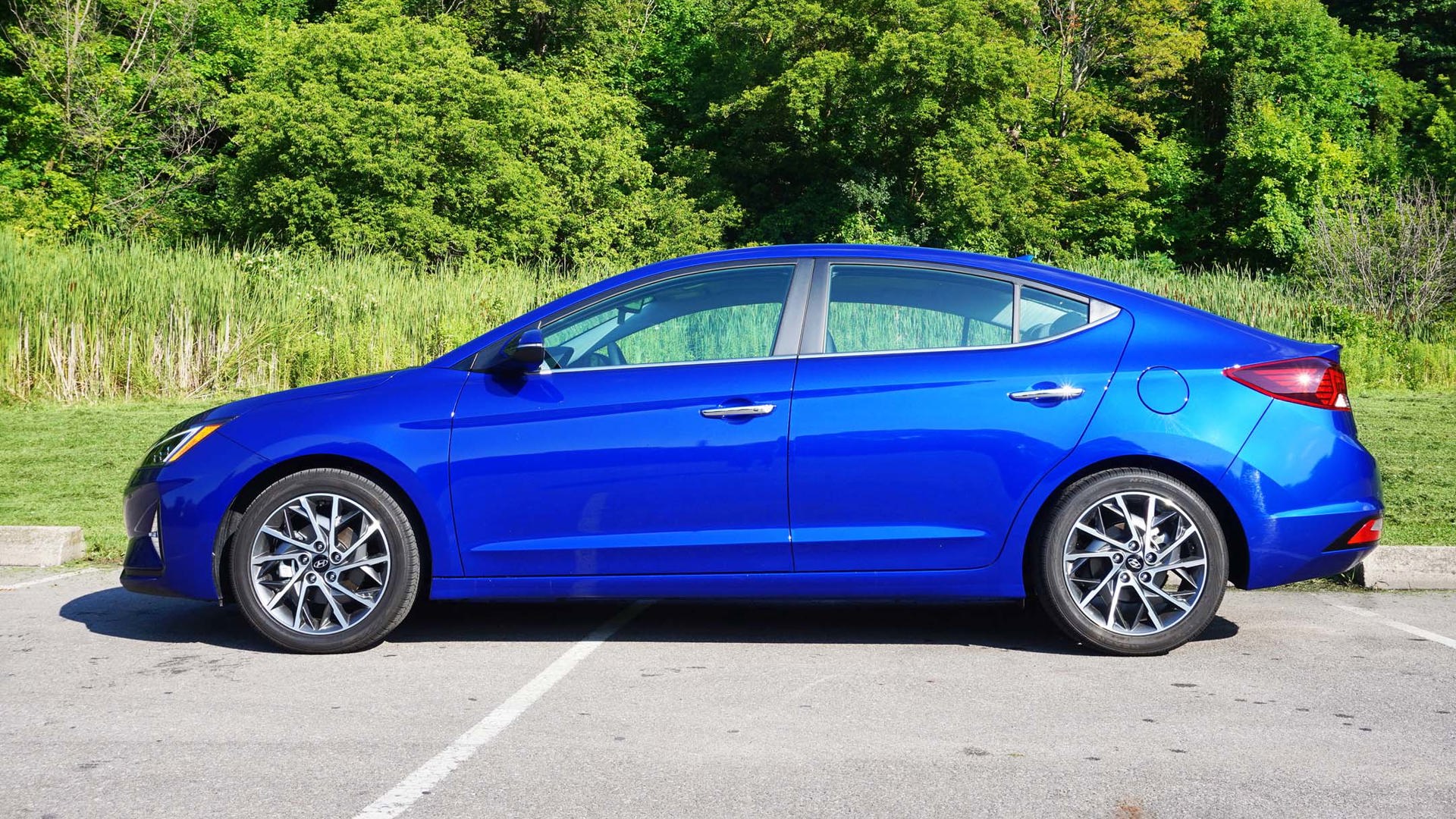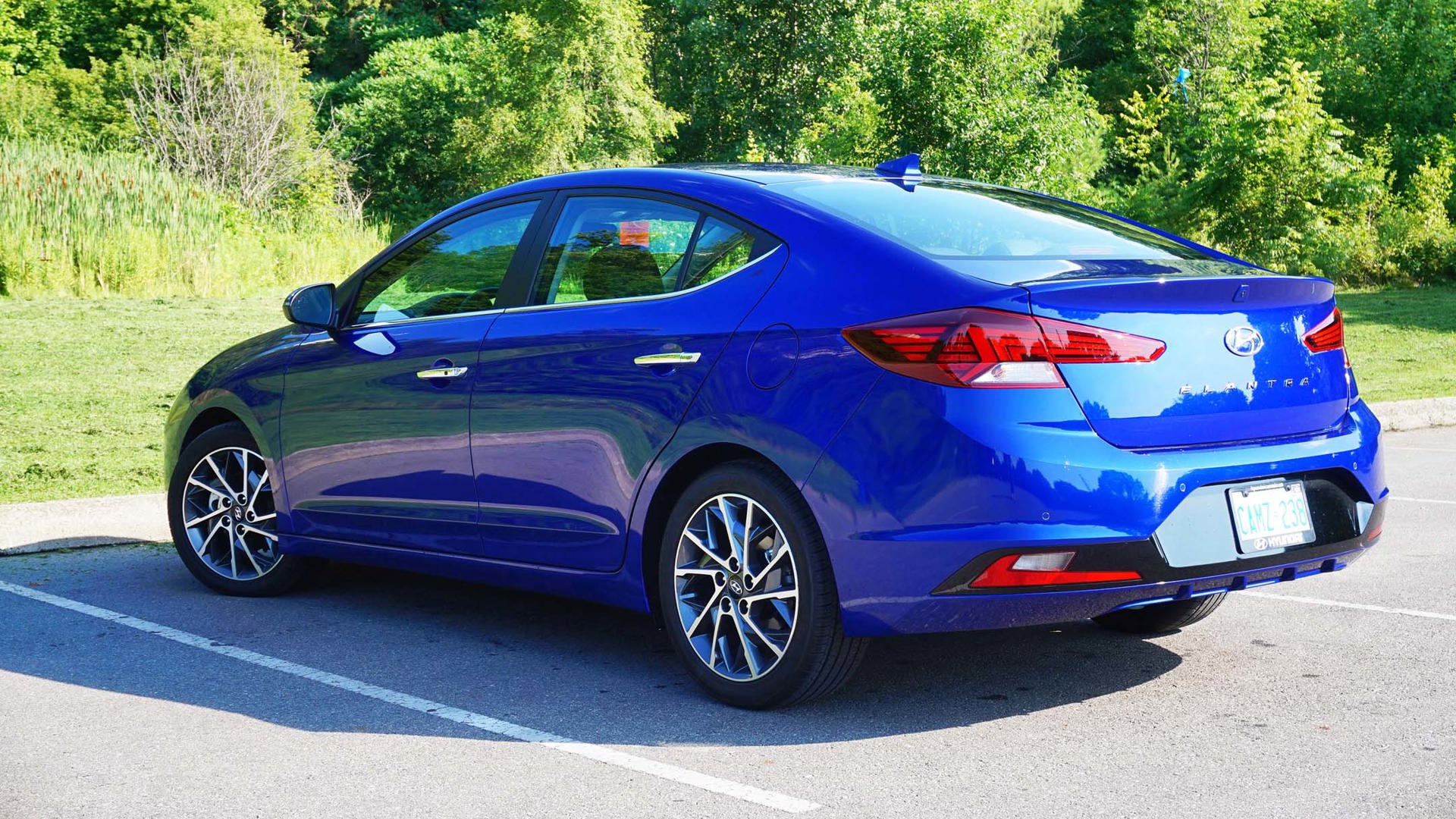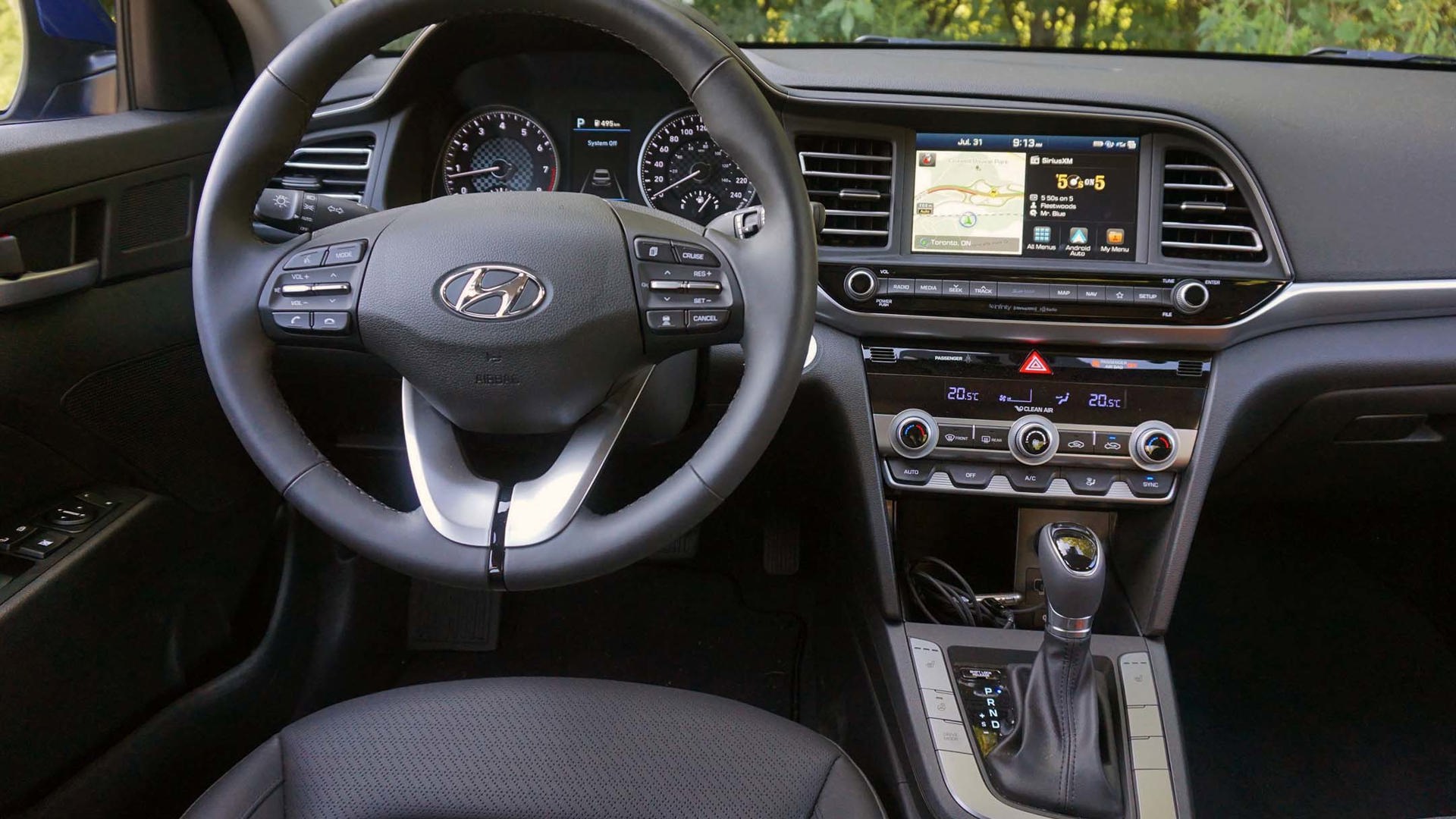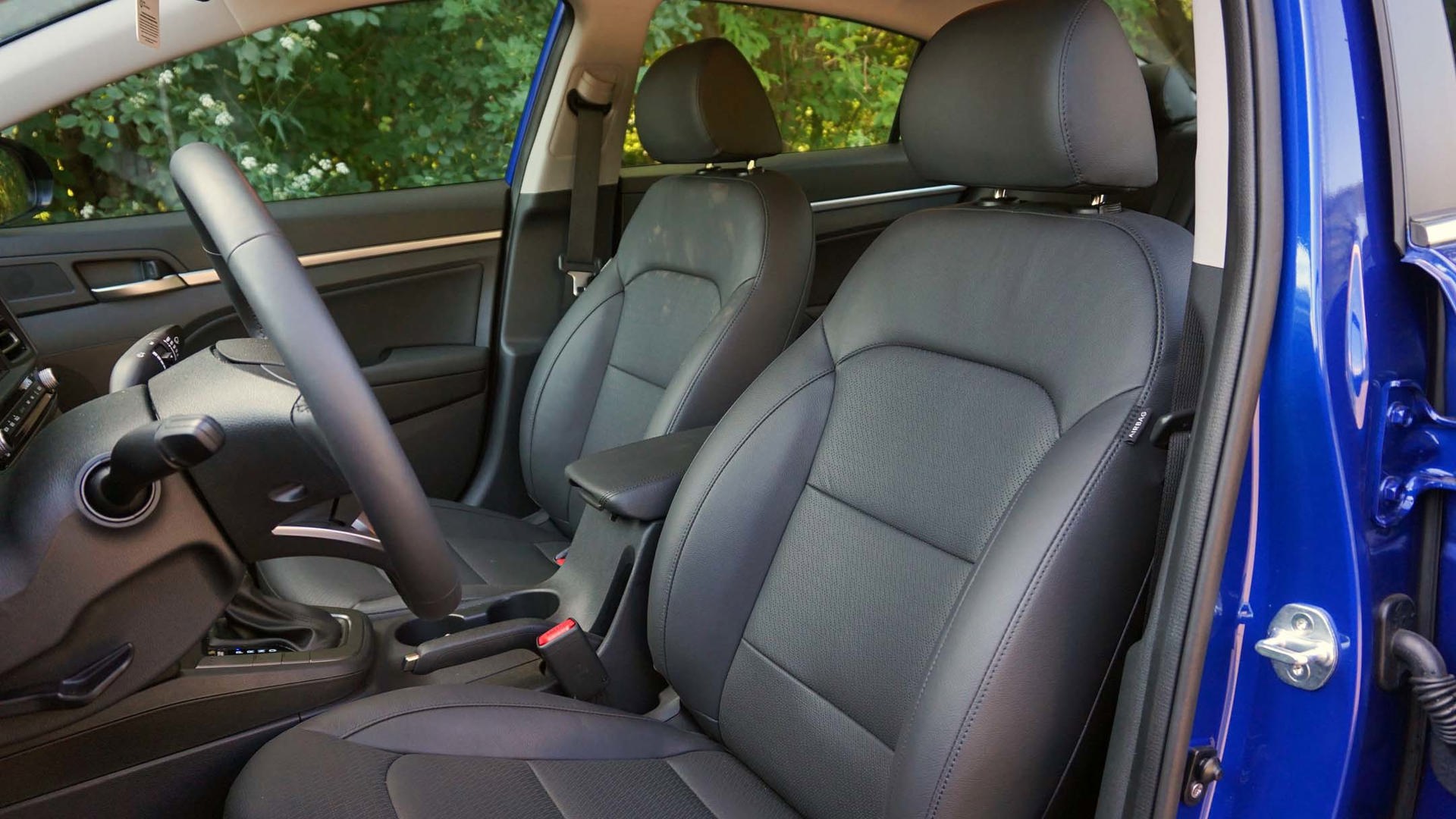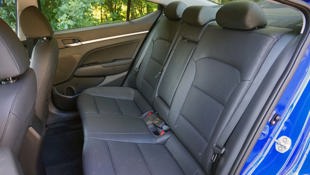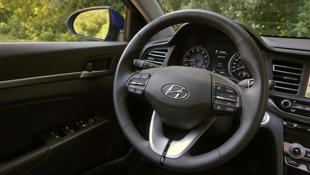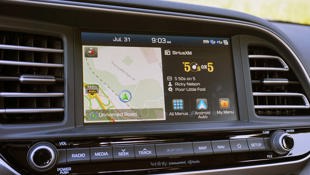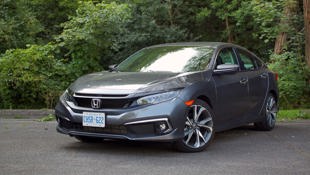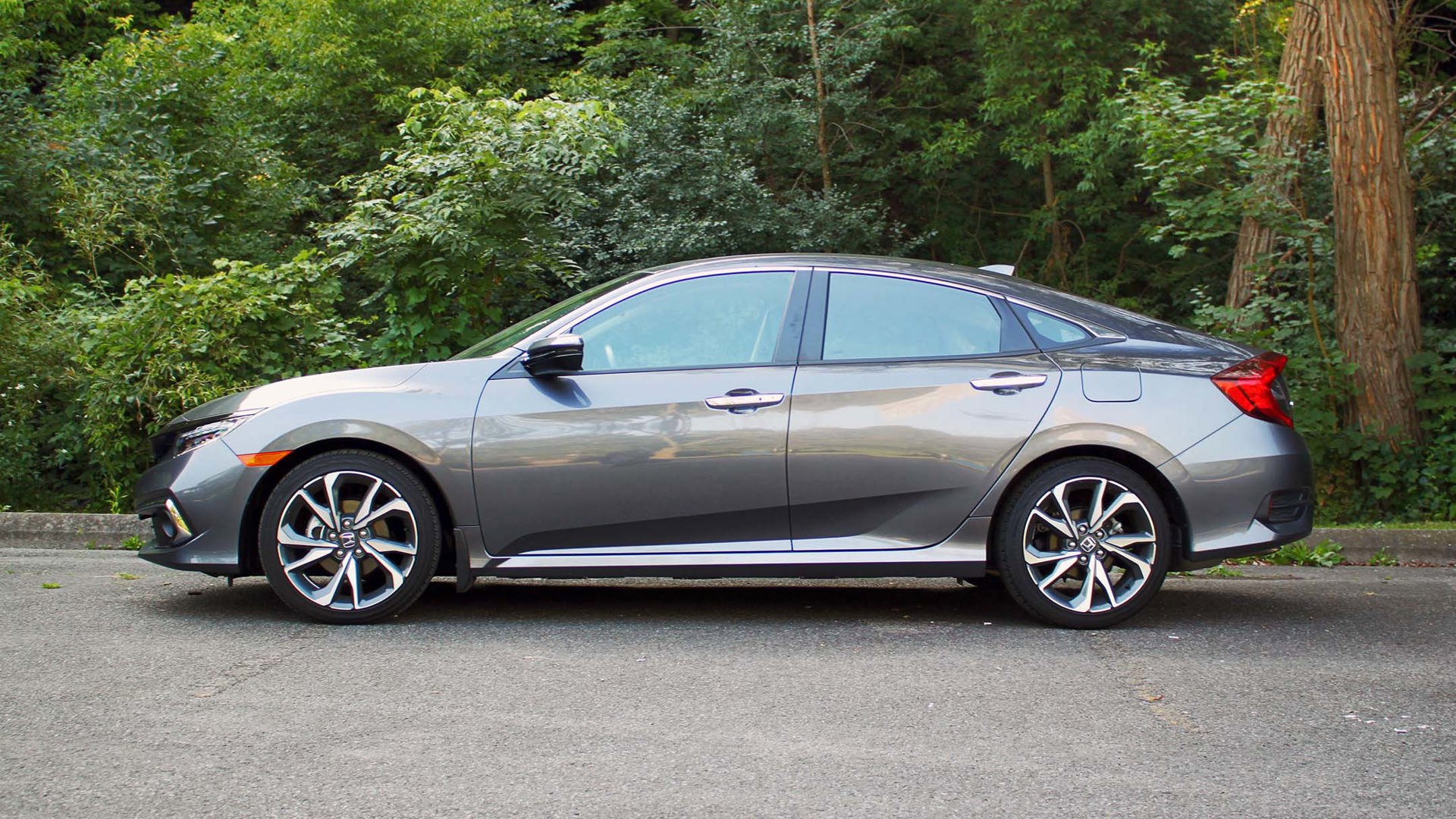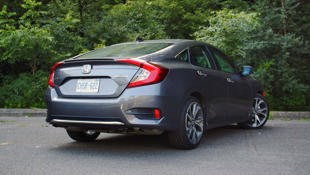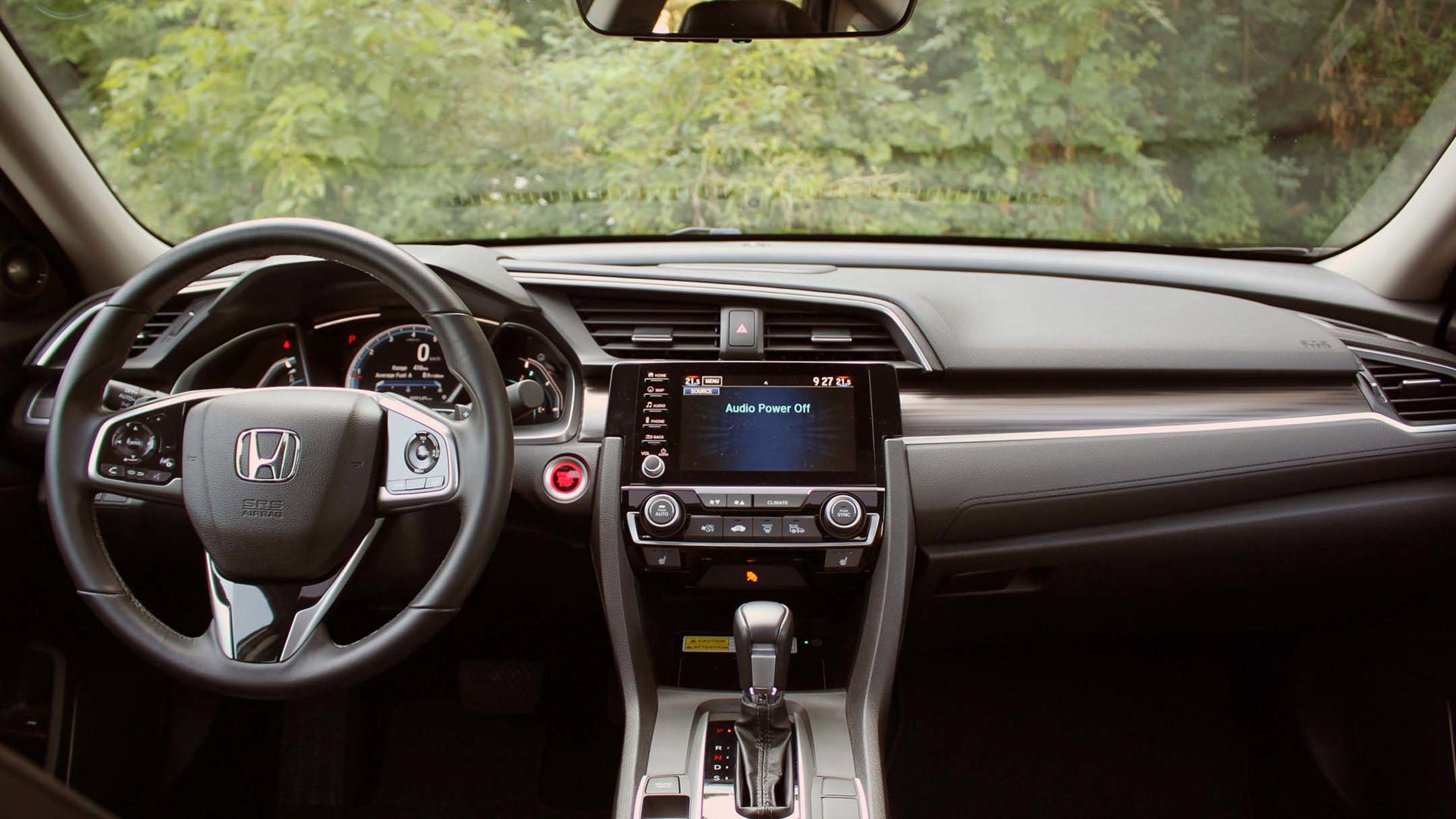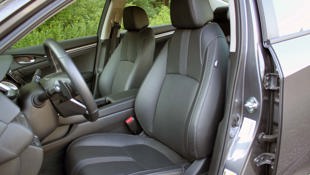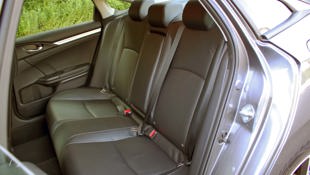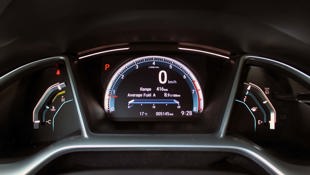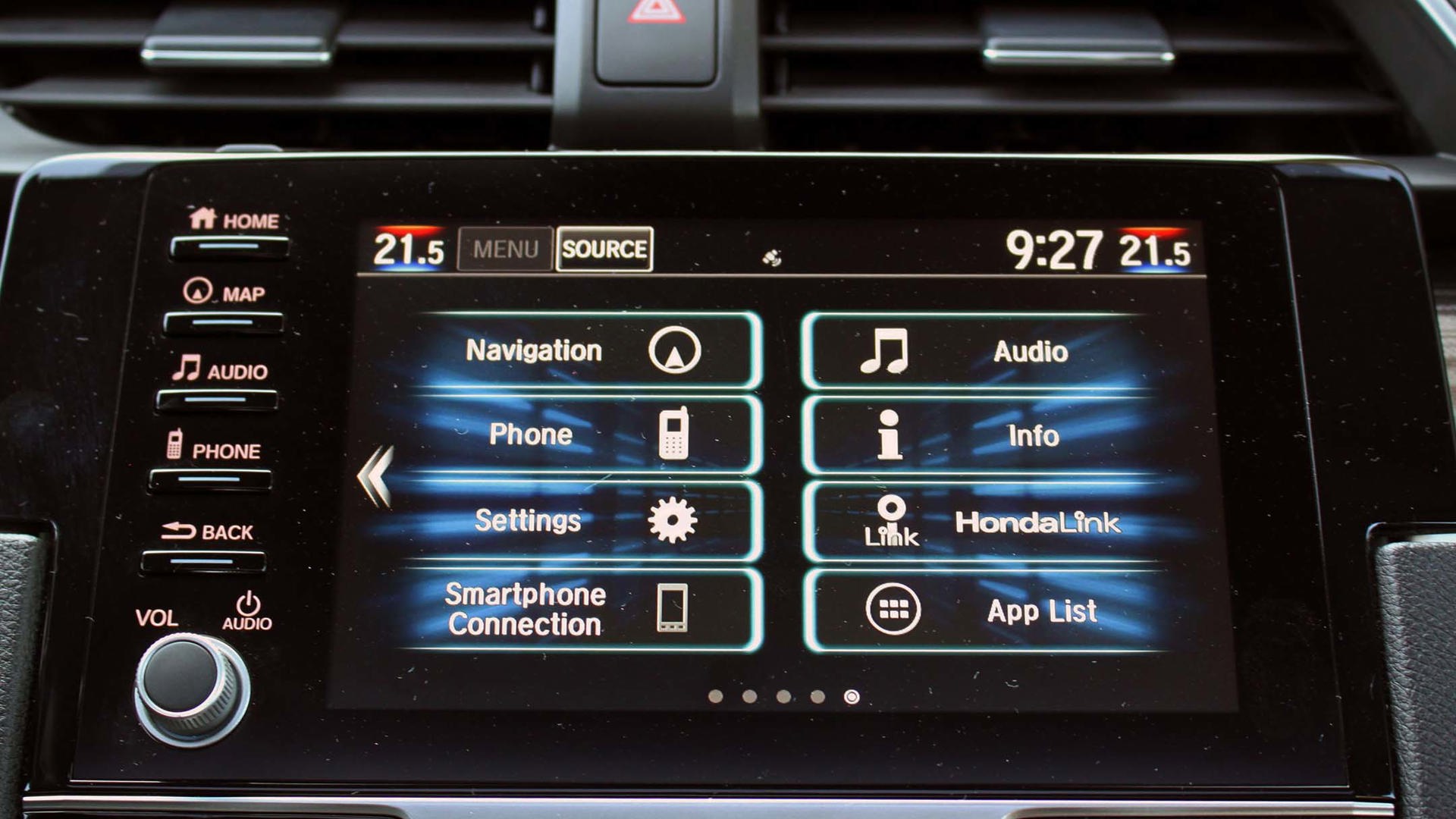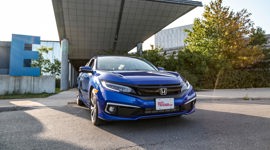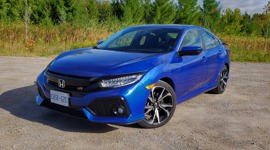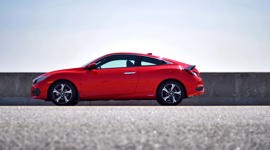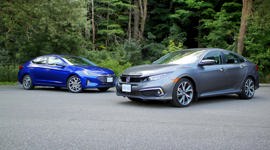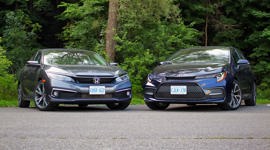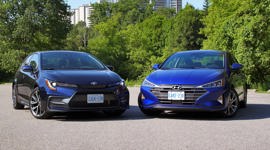Comparison Data
|
2019 Honda Civic Touring
|
2020 Hyundai Elantra 2.0 Ultimate IVT
|
2020 Toyota Corolla XSE
|
|---|---|---|
|
Engine Displacement
1.5L
|
2.0L
|
2.0L
|
|
Engine Cylinders
I4
|
I4
|
I4
|
|
Peak Horsepower
174 hp @ 6,000 rpm
|
147 hp @ 6,200 rpm
|
169 hp @ 6,600 rpm
|
|
Peak Torque
162 lb-ft @ 1,700–5,500 rpm
|
132 lb-ft @ 4,500 rpm
|
151 lb-ft @ 4,500–4,900 rpm
|
|
Fuel Economy
7.8/6.2/7.1 L/100 km cty/hwy/cmb
|
7.8/5.6/6.8 L/100 km cty/hwy/cmb
|
7.7/6.1/7.0 L/100 km cty/hwy/cmb
|
|
Cargo Space
416 L
|
407 L
|
371 L
|
|
Base Price
$28,090
|
$27,549
|
$28,490
|
|
A/C Tax
$100
|
$100
|
$100
|
|
Destination Fee
$1,655
|
$1,705
|
$1,645
|
|
Price as Tested
$29,845
|
$29,354
|
$30,235
|
|
Optional Equipment
|
Buying a small car is a big decision that can’t be taken lightly. Compact cars have evolved from being little more than cheap transportation, now arriving with desirable features, impressive power, and proper interiors, hitting a sweet spot between performance and efficiency. They try to do as much as they can for the least amount of money.
With that in mind, we brought the three best-selling compact sedans together for one big showdown. The 2020 Toyota Corolla is the freshest face here, with a new design and platform. It hopes to add to its image of being just a reliable car with a thorough offering that’s loaded with features and equipment.
The Honda Civic is the old guard, receiving its last update a few years ago. With a turbocharged engine, comfy ride and practical packaging, it continues to be among the most popular cars on our roads.
Finally, we have the Hyundai Elantra, a sleek-looking sedan that gets a new transmission this year to go along with its long list of features, excellent safety systems, and affordable price point.
After thorough testing, lively discussion, and mind-boggling math, the scores are finally tallied and we have our rankings.
Third Place: Toyota Corolla
A great-looking car that’s fun to drive yet pricey, small, and has limited features.
While the Corolla makes the strongest first impression, it loses its lustre after we spend more time with it. The high points of the Toyota are obvious: It looks pretty good, especially considering the Corollas of yesteryear were far more conservatively designed. The XSE-trimmed vehicle we have here looks quite aggressive and sporty, with a big grille, attractive LED signatures, and a blacked-out trunk lid spoiler.
The interior is equally impressive to look at, as the leather and cloth bucket seats are supportive and exude quality. Even the dashboard looks classy, while switchgear and buttons are well placed and easy to understand. The front seats are comfy and there’s a decent amount of room in the front, but the rear seats are just the start of where the Toyota falls behind. The rear seats are smaller and less comfortable than the competition, with far less room for passengers. The cargo area is also less impressive than the Elantra and Civic, although the Toyota does have a wide opening.
The Corolla regains a bit of its pride with the number of features it offers. With heated seats in the front and back, heated steering wheel, wireless phone charger, navigation, a JBL-tuned audio system, paddle shifters, and automatic climate control, the Corolla has a lot going for it. It also comes with a robust set of safety equipment and driver’s aids – enough to land it a Top Safety Pick rating from the Insurance Institute of Highway Safety (IIHS). According to the tests, it’s not as safe as the Elantra, but this Corolla has full-speed adaptive cruise control, blind spot monitoring, and lane-keeping assistance.
In practice, these features are good, but not perfect. The cruise control system can feel a bit slow to respond to changing traffic conditions. The list of features is also a bit skewed, as some important factors are missing. There is no dual-zone climate control, which is found on the other cars here. And while the Toyota infotainment system now supports Apple CarPlay, it lacks Android Auto compatibility. Without smartphone integration, the infotainment is slow and ugly-looking.
That quirky infotainment goes against the other elements of the car: The Corolla is nice to look at and has a decent powerplant under the hood. A 2.0-litre four-cylinder engine makes 169 hp and 151 lb-ft of torque. It’s paired to a continuously variable transmission, which also features a physical first gear, something that’s designed to help the car feel more natural and sporty off the line. The motor is good and we have almost no complaints about it. Driving the Corolla feels natural and easy, although the CVT gets very loud and irritating if you’re driving in a hurry.
Rated by Natural Resources Canada (NRCan) at 7.0 L/100 km in combined city/highway driving, the Corolla was expected to be mid-pack in terms of fuel efficiency; but in our experience, it was the thirstiest of the trio. We’d chalk that up to the extra kilograms the Corolla carries around, as it’s the heaviest of the group.
However, it felt sturdy and confident on the road. Switching the Corolla to the same TNGA platform found throughout most of the Toyota lineup has paid dividends, and buyers will find the compact to be very rewarding on the road. It feels agile and responsive, essentially a complete contrast to previous Corollas.
However, with a price of $30,266, the Corolla is the most expensive car here. For that price, you get a good-looking car that drives well and is decently equipped, but certainly not the best in class. The high price doesn’t mix well with the few missing features, the tiny rear seat, and the small trunk, resulting in a last-place finish for the Toyota.
Second Place: Hyundai Elantra
Tons of features for a low price, the Elantra is well-sized but slow.
The Elantra, on the other hand, comes in with the lowest price of the trio, meaning it has already earned kudos before it was even tested. Style-wise, it’s not as attractive as the Corolla, but easier on the eyes than the Civic. While the design is cohesive, it’s best described as conservative compared to the other two cars. I love the cleverly designed trunk release, which is hidden in the Hyundai badge.
The Elantra’s interior makes little to no impression. It’s flat and conservative as well. This may sound like a harsh criticism, but it isn’t – the interior is familiar and easy to get used to. Compared to the Civic and Corolla, the Elantra’s interior has harder panels and can sometimes feel like an old-school penalty box. On the other hand, fancy leather seats and a long list of features help the Elantra regain some credibility. The larger rear seat and trunk space make the Elantra more comfortable and practical than the Corolla.
You’ll find most of the same features in the Elantra as the Corolla, and a few more. That means in addition to the heated seats, heated steering wheel and wireless phone charger, the Hyundai has dual-zone climate control and an infotainment system that includes Android Auto and Apple CarPlay support. Better yet, if you don’t want to use those smartphone systems, the Hyundai touchscreen is the best in the group, with bright graphics and large, easy-to-use controls.
Like the Corolla, the Elantra comes with plenty of safety and driver-assist features, but it earns the coveted Top Safety Pick+ rating from the IIHS, a special award that identifies the Elantra as being the safest in its class. Some buyers mention concerns about small cars being safe, but the Hyundai leaves no reason to worry. One issue with the Elantra’s cruise control system is that it doesn’t work at all speeds, like the system found in the Corolla and Civic. Beyond that, the Elantra really impresses with its offerings.
The powertrain is where the Korean car falters. The 2.0-litre four-cylinder engine makes less power than its competitors, with 147 hp and 132 lb-ft of torque. This buzzy engine is paired to what Hyundai calls an Intelligent Variable Transmission, meaning the Elantra, like the Corolla, has a fancy CVT. This system uses something like simulated gear ratios that feel more natural than other CVTs out there. In practice, it never provides the weird rubber-band-like behaviour on the road exhibited by less refined CVTs. The Elantra can get up to speed in a hurry, but like the Corolla, it’s noisy and unrefined in the process.
On the road, the Elantra feels good, though less sporty than the Corolla. It’s definitely more responsive than the Civic, and though the steering can feel a bit heavy and numb, the ride is firm. Data from Hyundai claims that the Elantra should be the most fuel-efficient car of the bunch, but it ended up mid-pack after our test loop.
Helping the Elantra land in second place is its low as-tested price of $29,381, making it the most affordable of the bunch. It’s more spacious than the Corolla and has more features than the both competitors. The drab, conservative interior is easy to get used to, but the Elantra just doesn’t feel as effortless on the road as the Civic does.
First Place: Honda Civic
A powerful engine makes the spacious Civic easy to drive, yet fuel-efficient.
The Civic dominates this segment and is one of the most popular cars on the road. So, how does Honda consistently overachieve? With clever packaging. The exterior design of the Civic isn’t worth mentioning. While we’ve known this design for a few years now, it still can’t be called attractive. The front end is busy and the rear end is ugly. When it comes to the overall design, only the profile is nice.
The interior is similarly busy, but it’s easier to digest. There is an interesting mix of materials throughout the Civic, and fewer hard plastics than what’s in the Elantra. The drawbacks of the Civic involve the messy dashboard, but I find the in-cabin storage impressive. There are shelves and cubbies galore, providing plenty of space for whatever you want to unload from your pockets. These are details that help the Civic gain ground on its rivals.
In terms of features, the Civic is competitive, with heated seats, dual-zone climate control, and a wireless phone charger. It’s missing a few important items, like a heated steering wheel and a true blind spot monitoring system. Instead, you get Honda LaneWatch, which activates whenever you flick the right turn signal, providing a camera feed of what’s happening on the passenger side of the vehicle displayed on the infotainment screen. This has its advantages, but it also seems to encourage bad habits of looking at the screen rather than your mirrors or through your windows. And what about the driver’s side? You get no assistance when changing lanes on the left.
Fortunately, the Civic has excellent adaptive cruise control and lane-keeping systems. For the ACC, it’s a well-designed system that doesn’t shake your confidence with sluggish performance like in the Corolla, and works at all speeds, unlike the Elantra. However, even with those advanced driver’s aids, the Civic fails to earn any recognition from the IIHS like the other two cars. The institute blames the car’s headlights as the deciding factor.
The infotainment system in the Civic is also comparatively slow and clunky to use, but helping to mitigate concerns, it offers Android Auto and Apple CarPlay support.
With its 1.5-litre turbocharged four-cylinder engine, the Civic makes more power and torque than the other cars here. The 174 horsepower and 162 lb-ft of torque combined with the Civic’s low weight give the car an athletic feel whenever you put your foot down. You never feel like the compact isn’t up to the task of making a pass or finding a spot in traffic. An important part of this is the CVT, which doesn’t have any gimmicks like the Corolla or Elantra, but feels very responsive, popping the engine into its ideal powerband as needed and then settling down quickly.
The Civic does feel a bit less agile than the other two cars, with softer suspension and light steering. It wallows over speedbumps and you can feel the weight shift in corners and on-ramps. These aren’t deal-breakers in our books since we’re not evaluating these sedans as sports cars. If anything, the Civic ends up feeling a bit more comfortable, less serious, and easy to drive in any circumstance. It seemed at home making quick sprints through the tightly packed city and managed just as well on long trips packed with friends or family.
NRCan says the Civic would be the least efficient of the group with a rated consumption of 7.1 L/100 km in combined driving situations. After driving our test loop, however, we found the Civic to be more fuel-efficient than the others. A couple factors can lead to this result, including the Civic’s lighter weight and broad torque delivery.
Fuel efficient, spacious, and easy to drive, the Civic also sits mid-pact in terms of pricing. Our Touring model had a price tag of $29,876, making it $495 more than the Elantra and $390 less than the Corolla. It offers more power and more space than its rivals with limited compromises. For yet another year, it seems to be the top pick in our view, but its rivals are definitely catching up.


